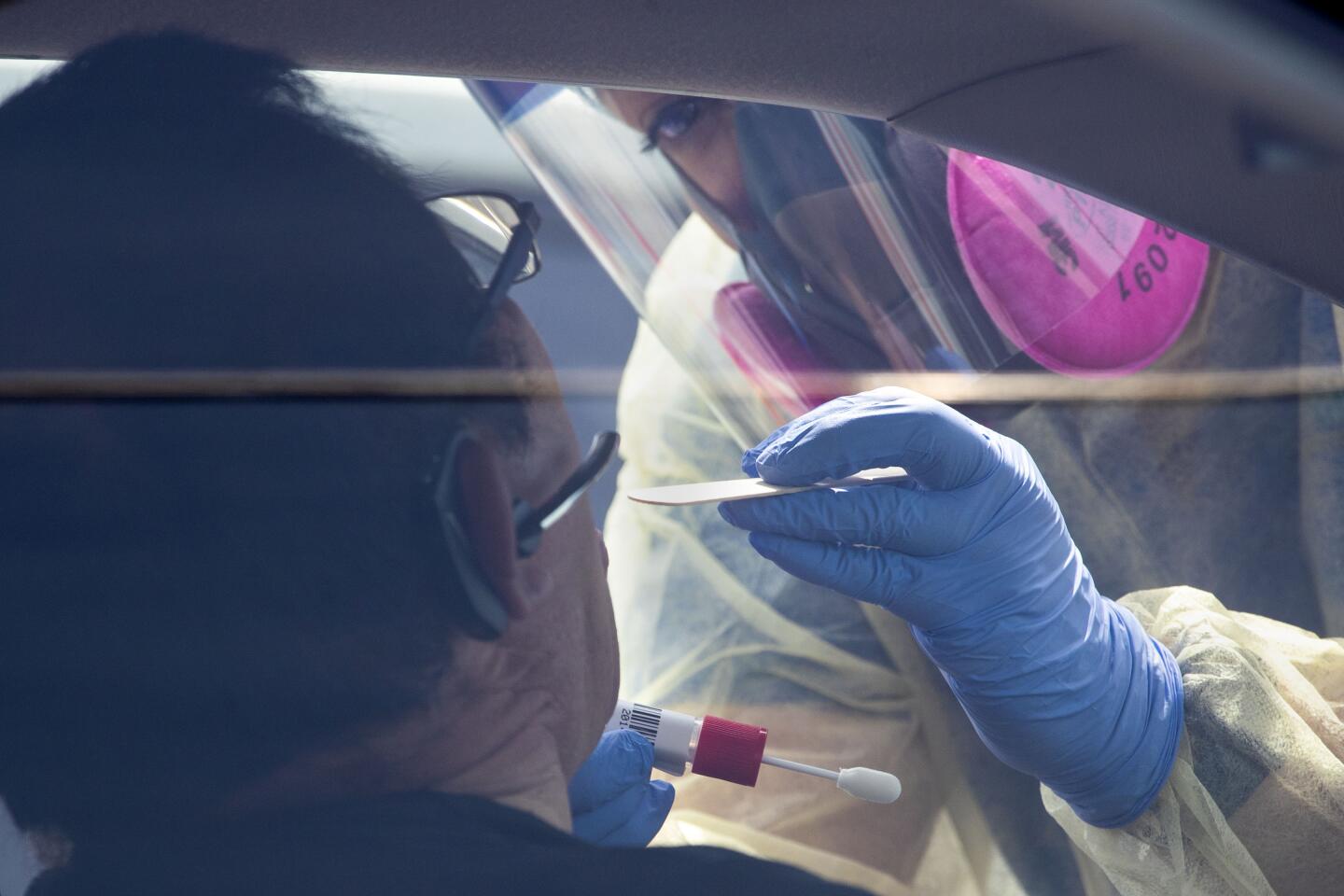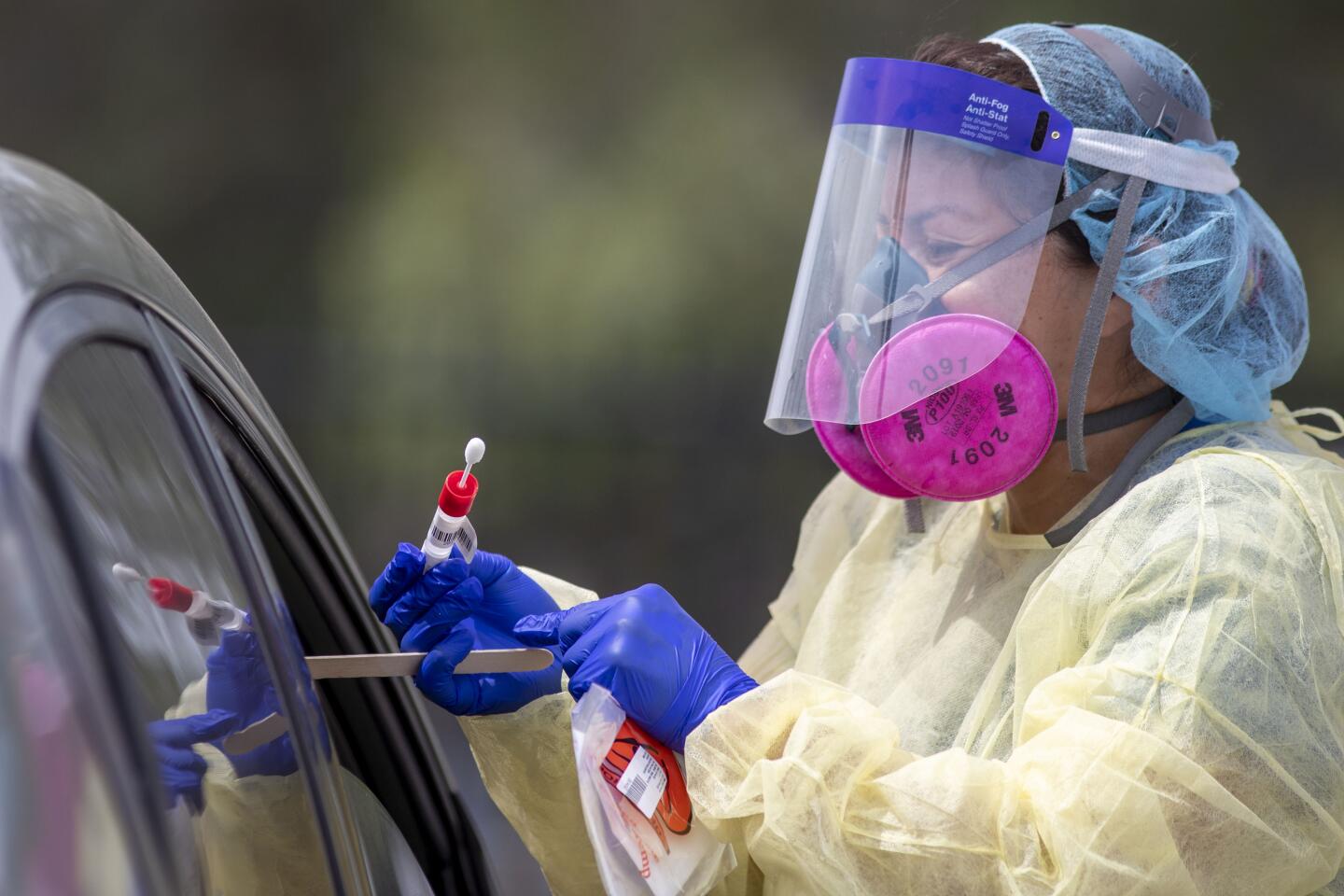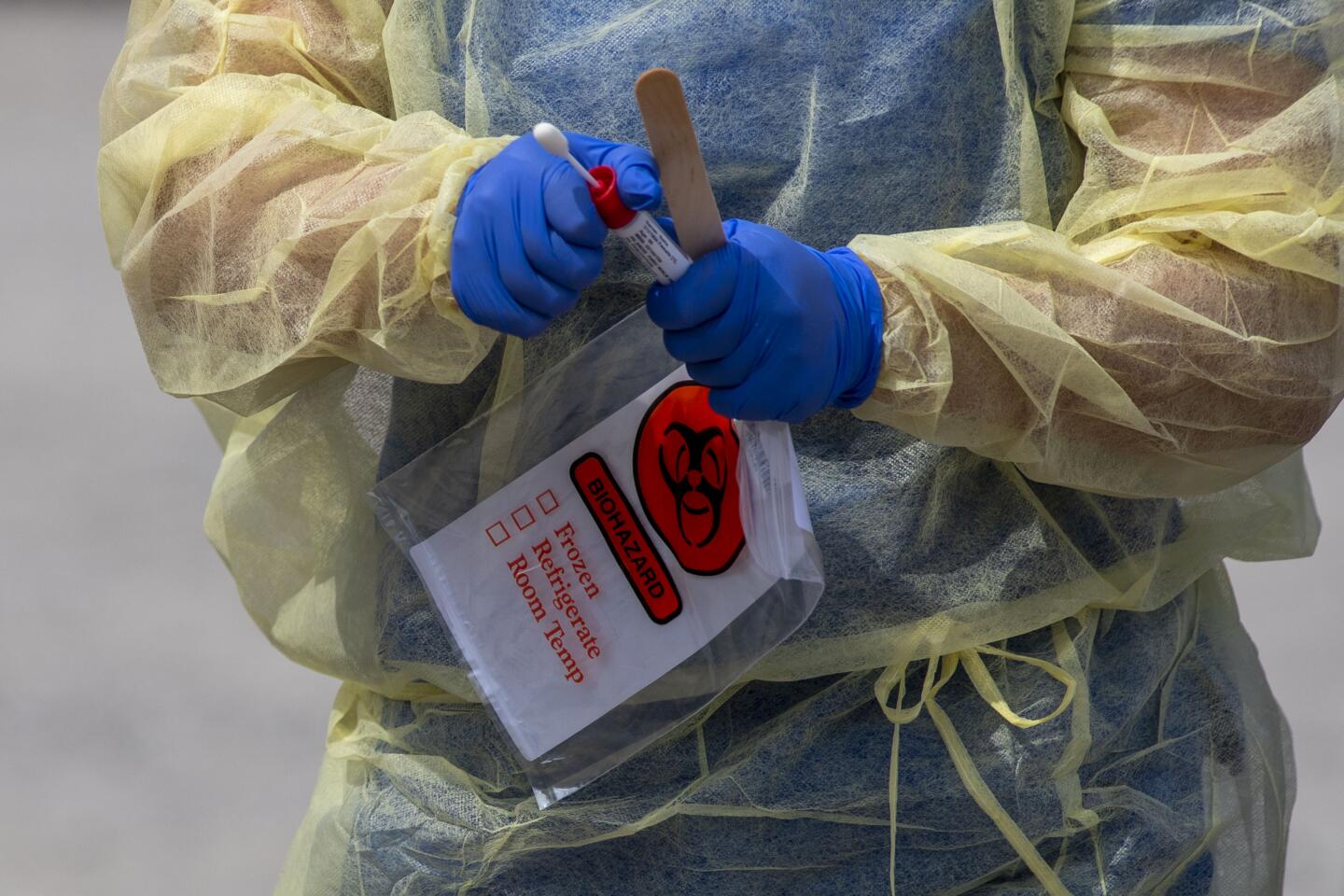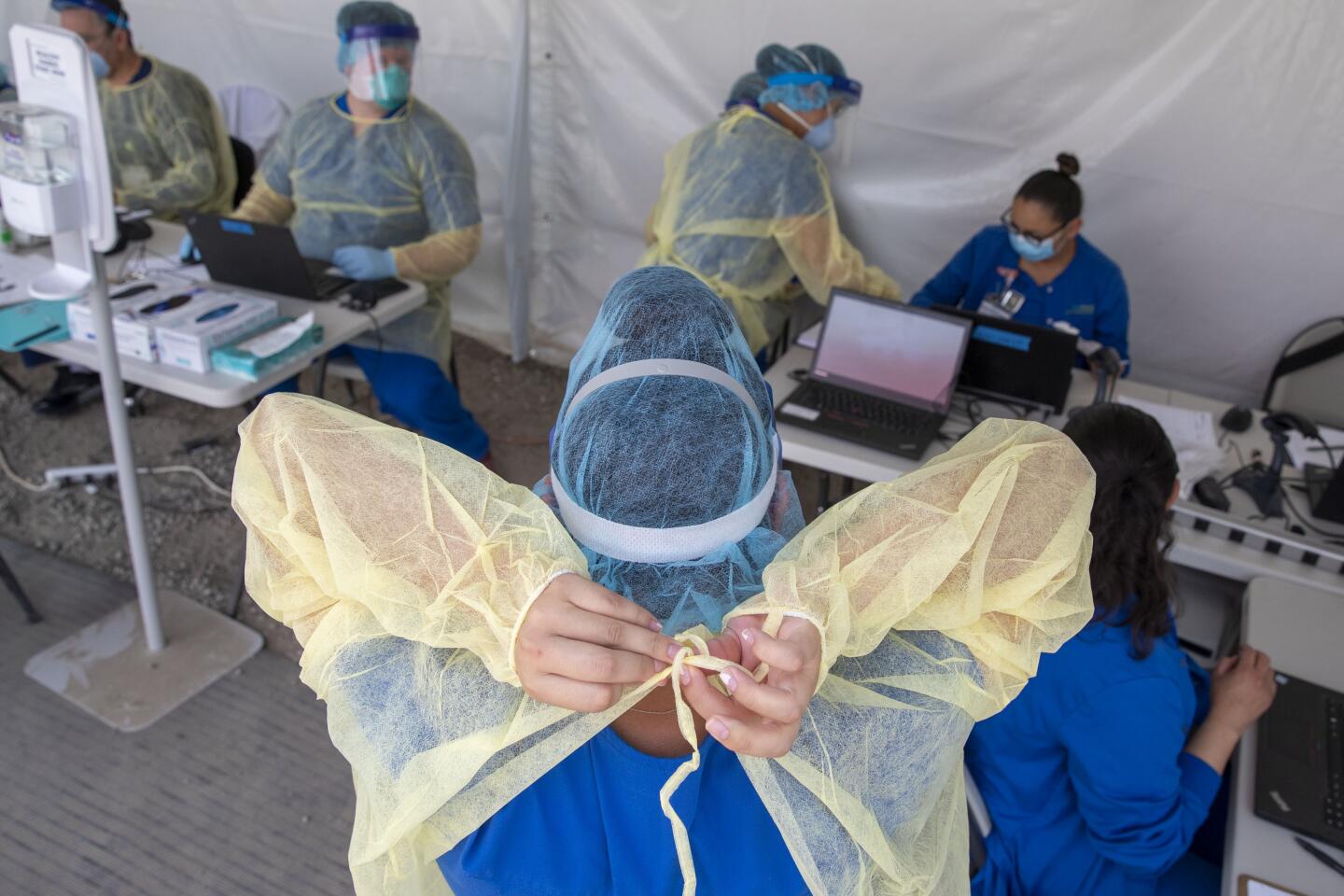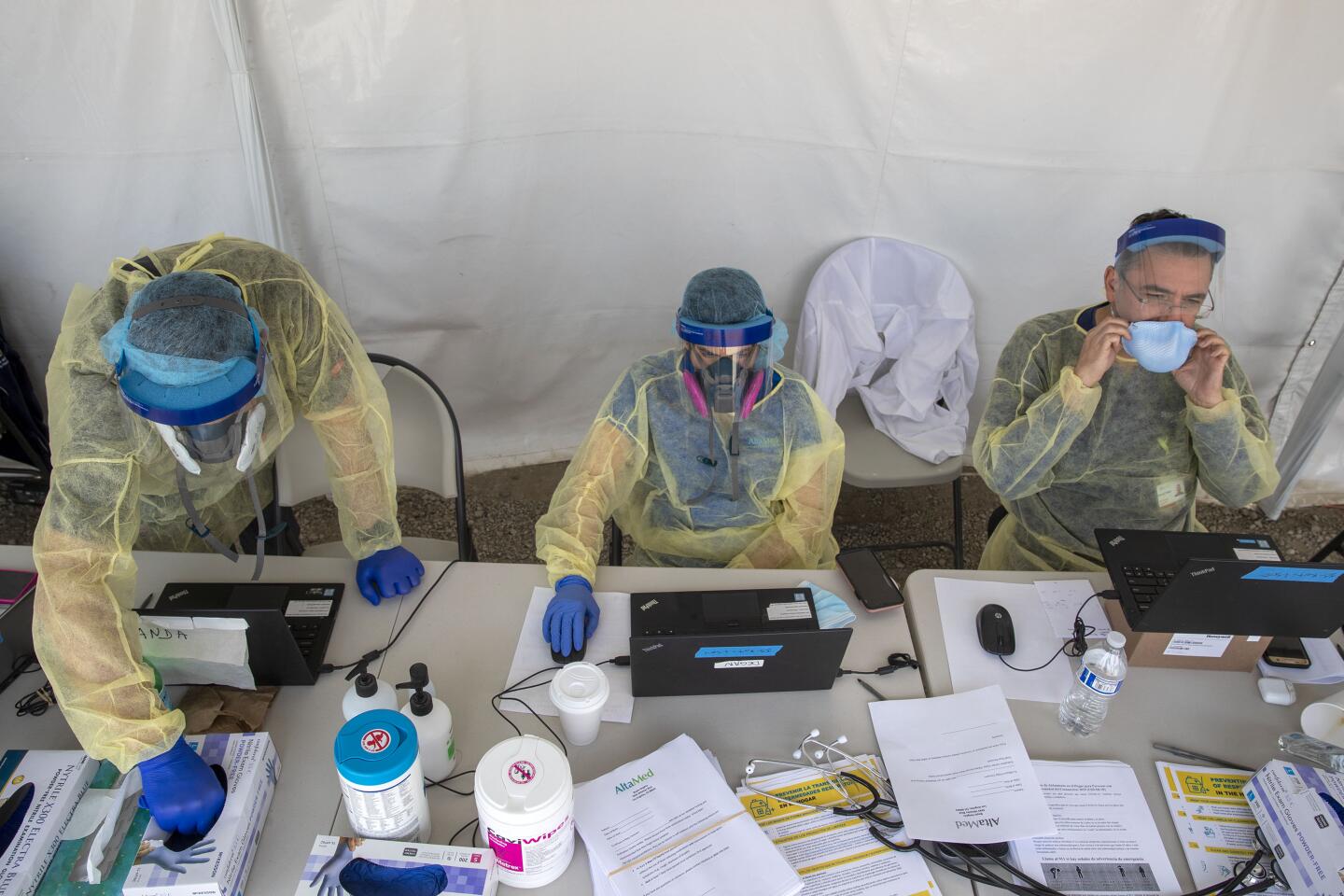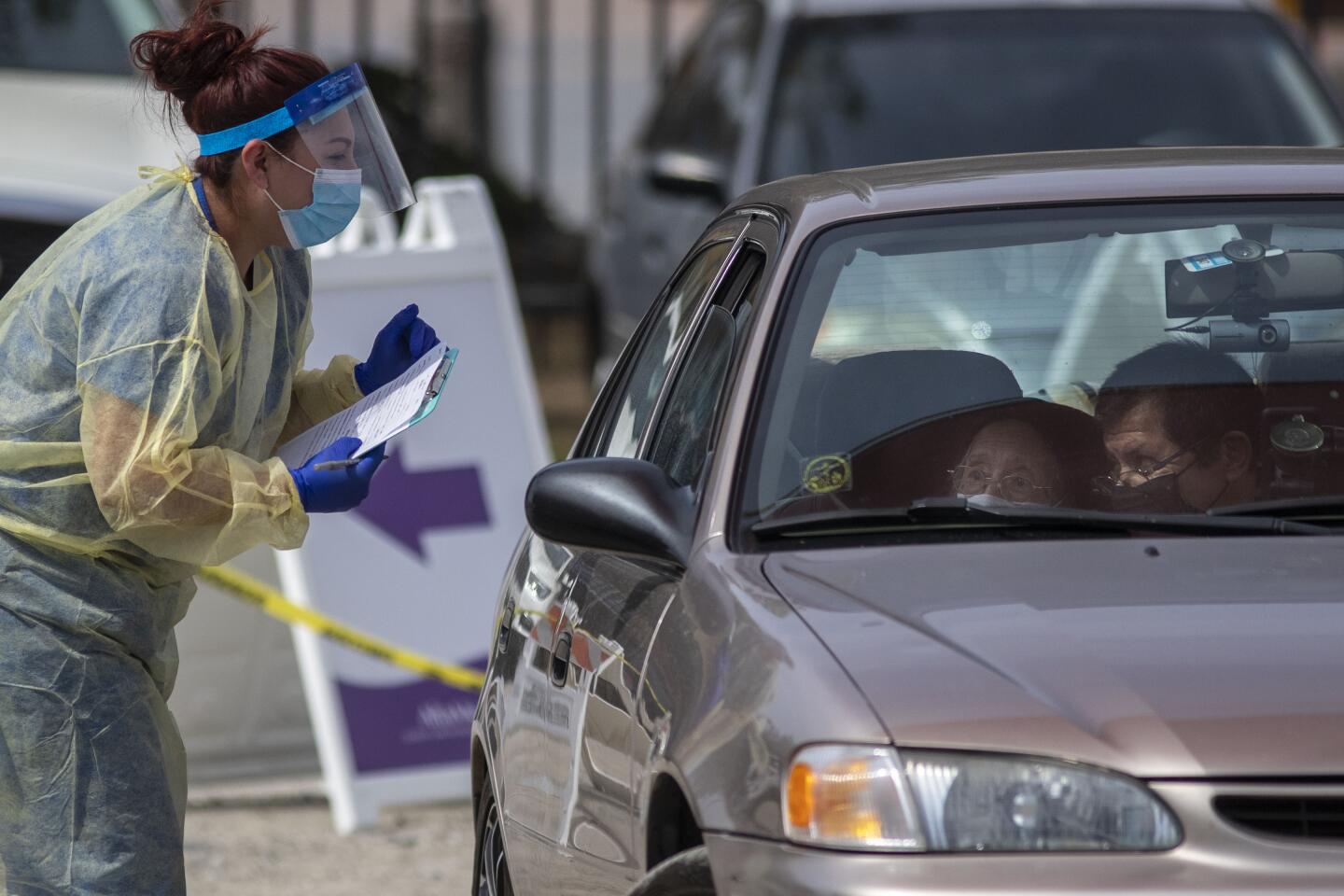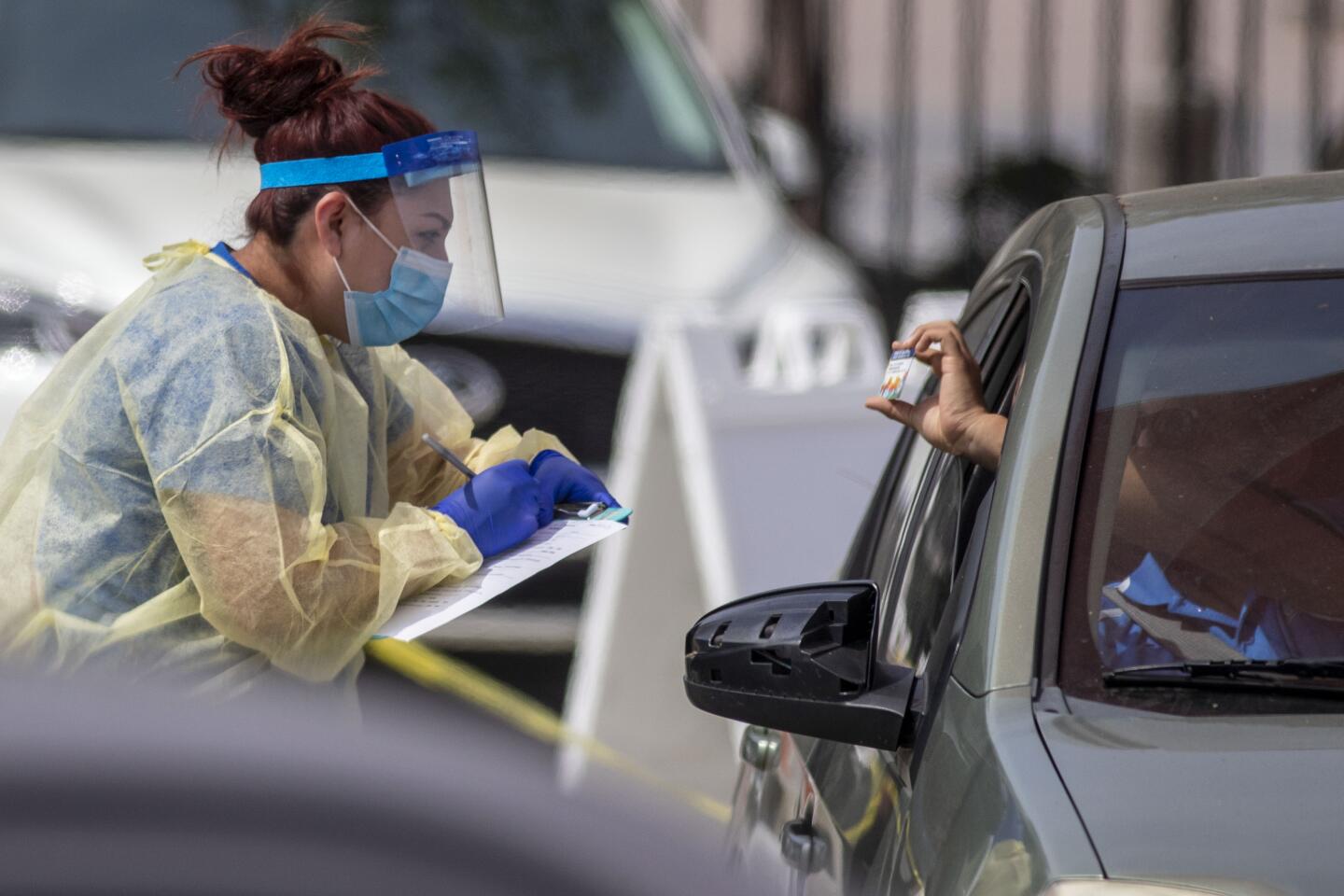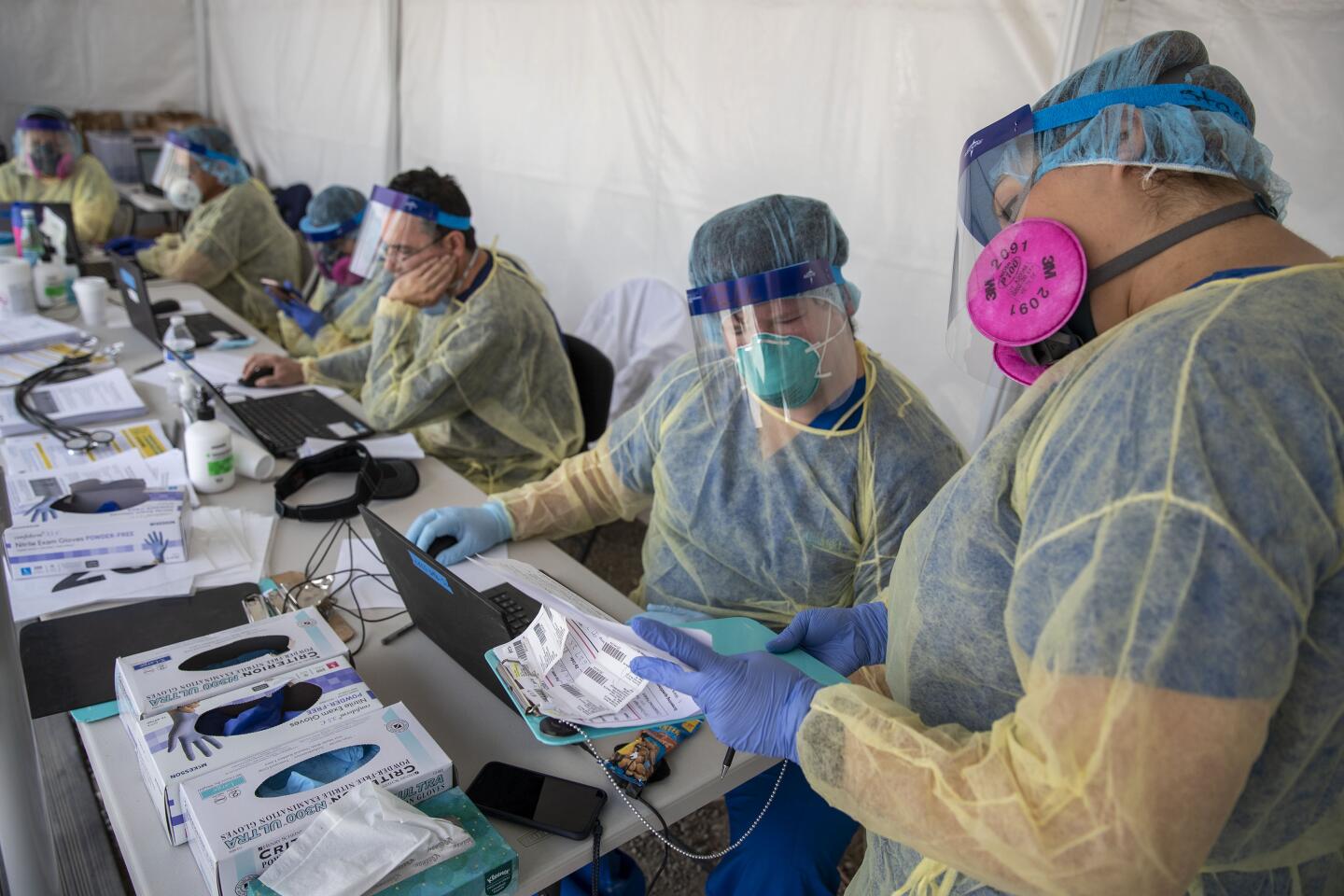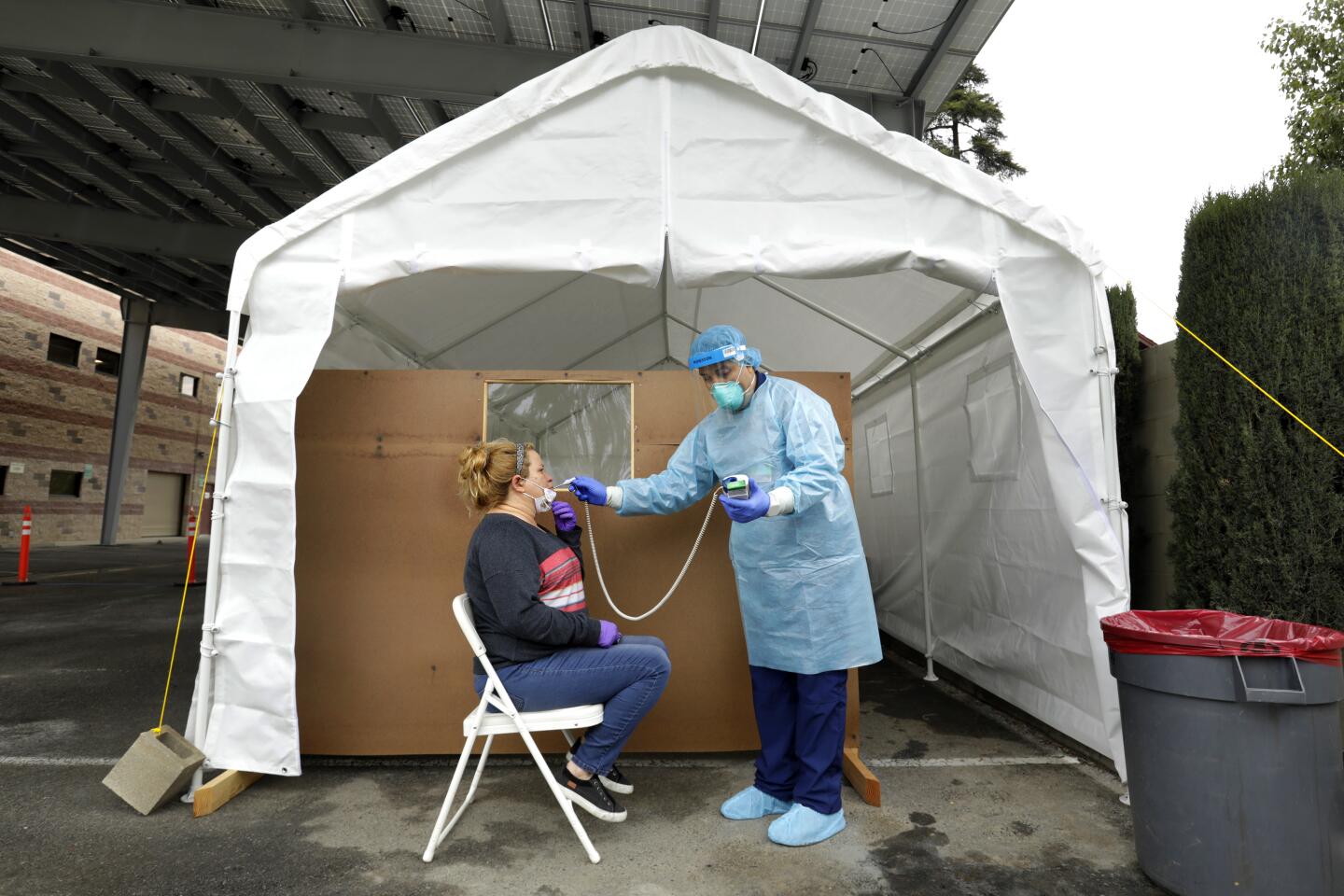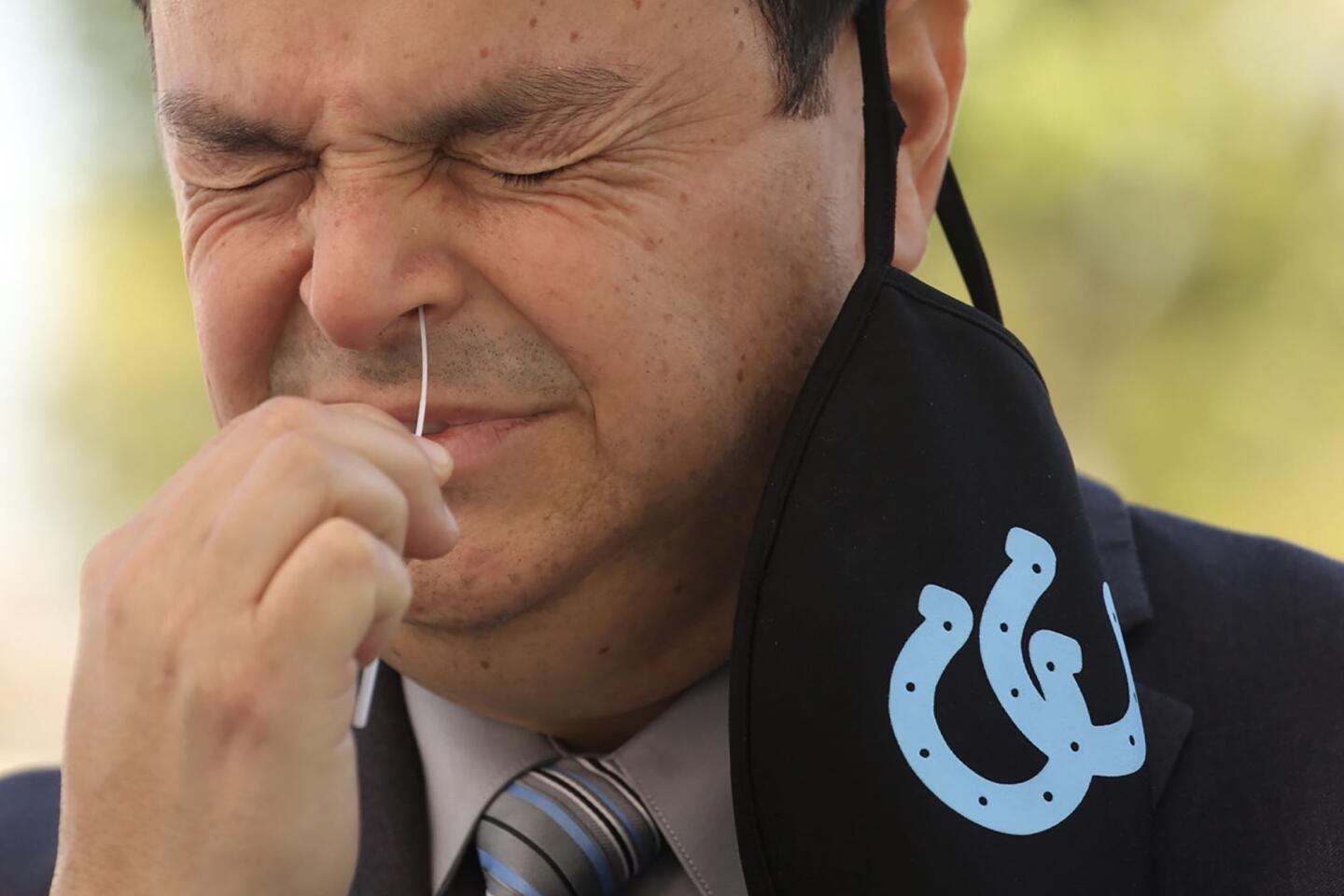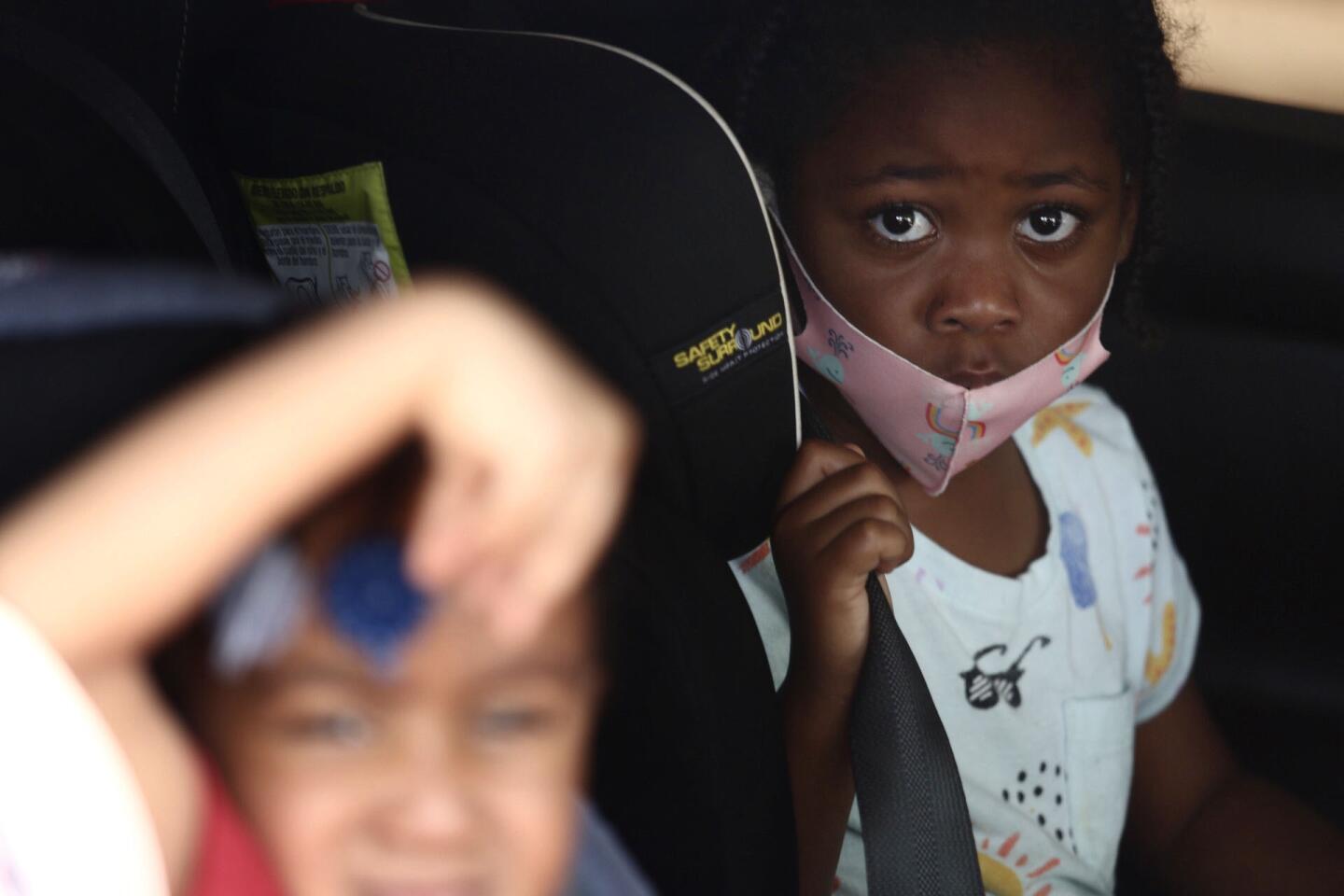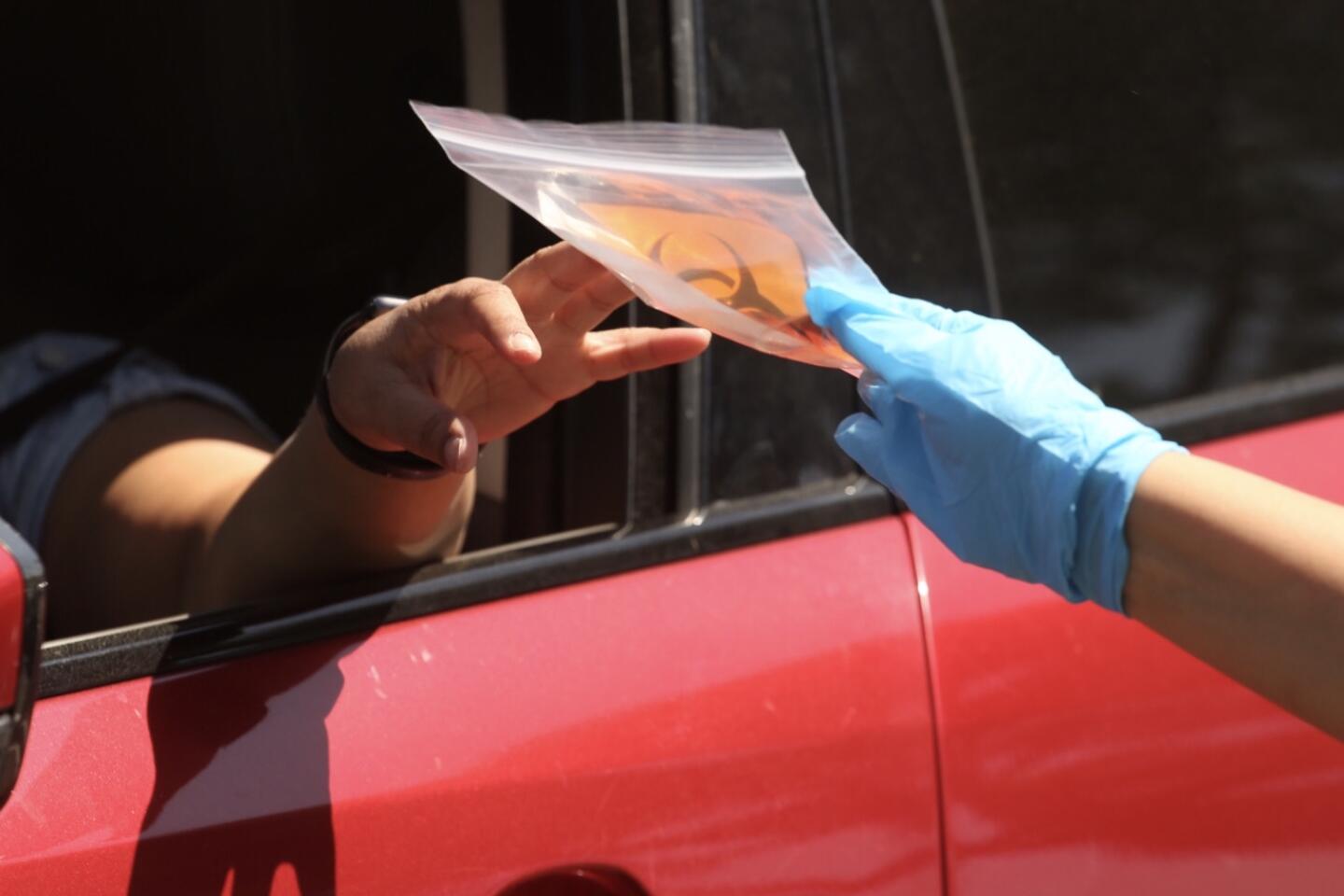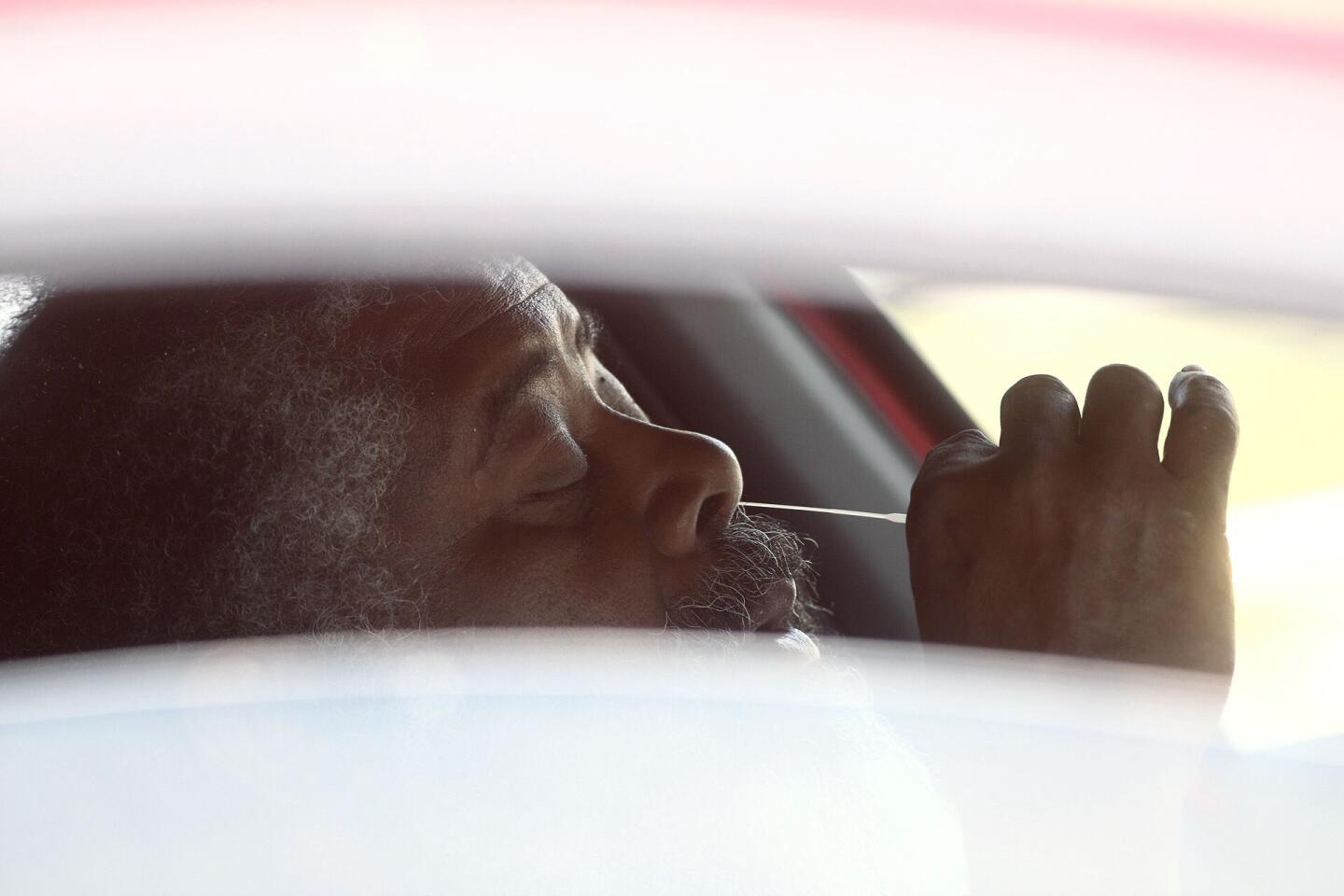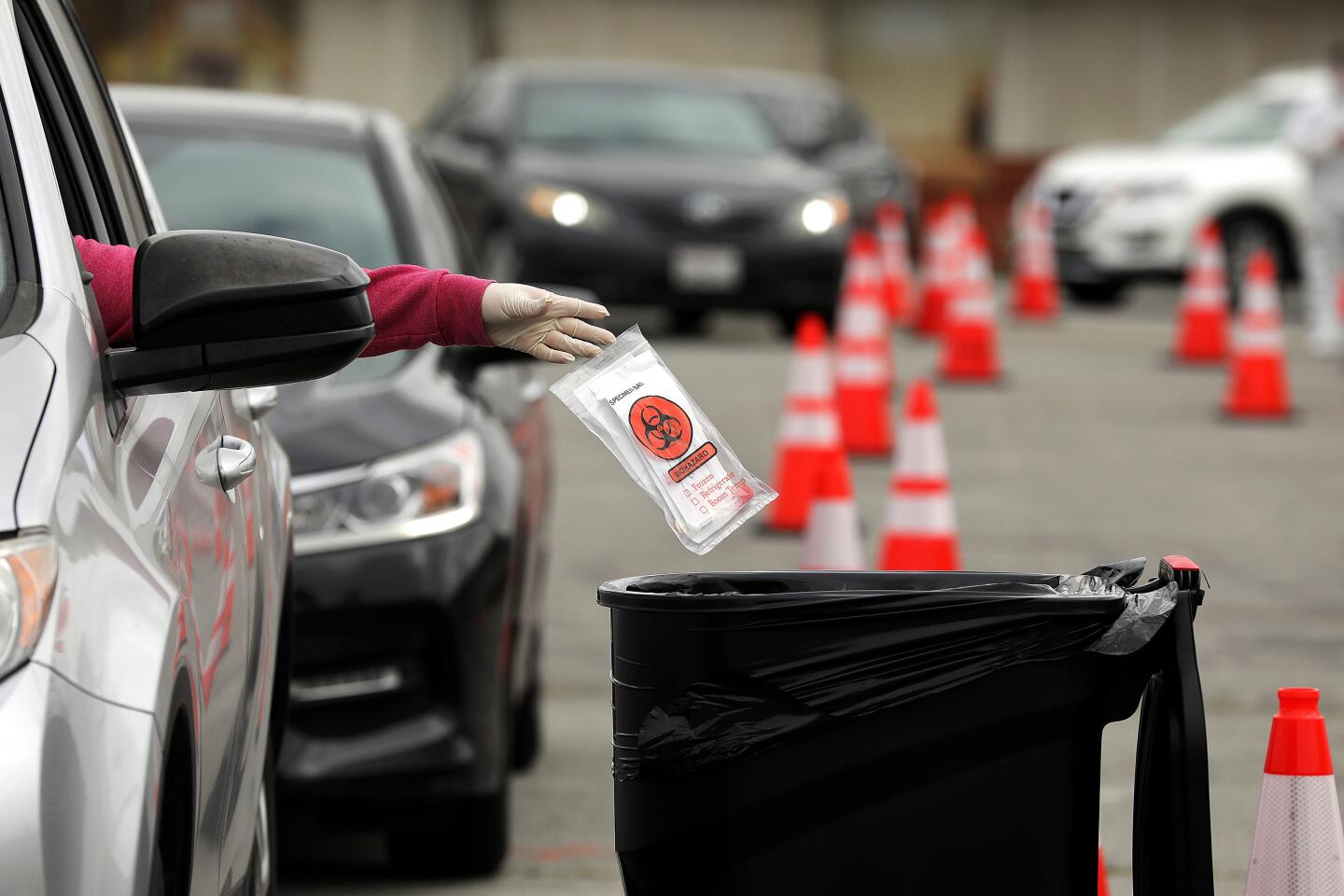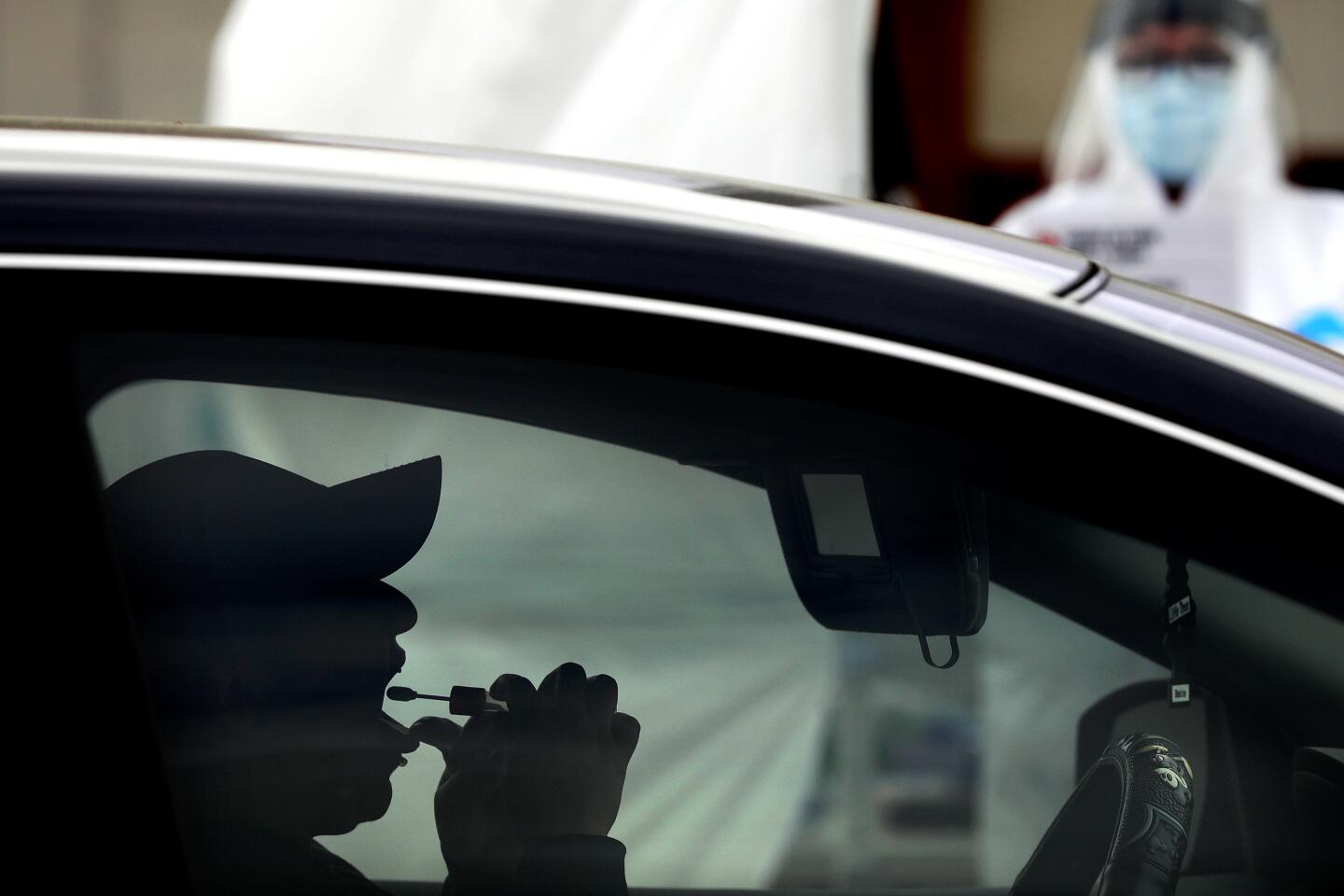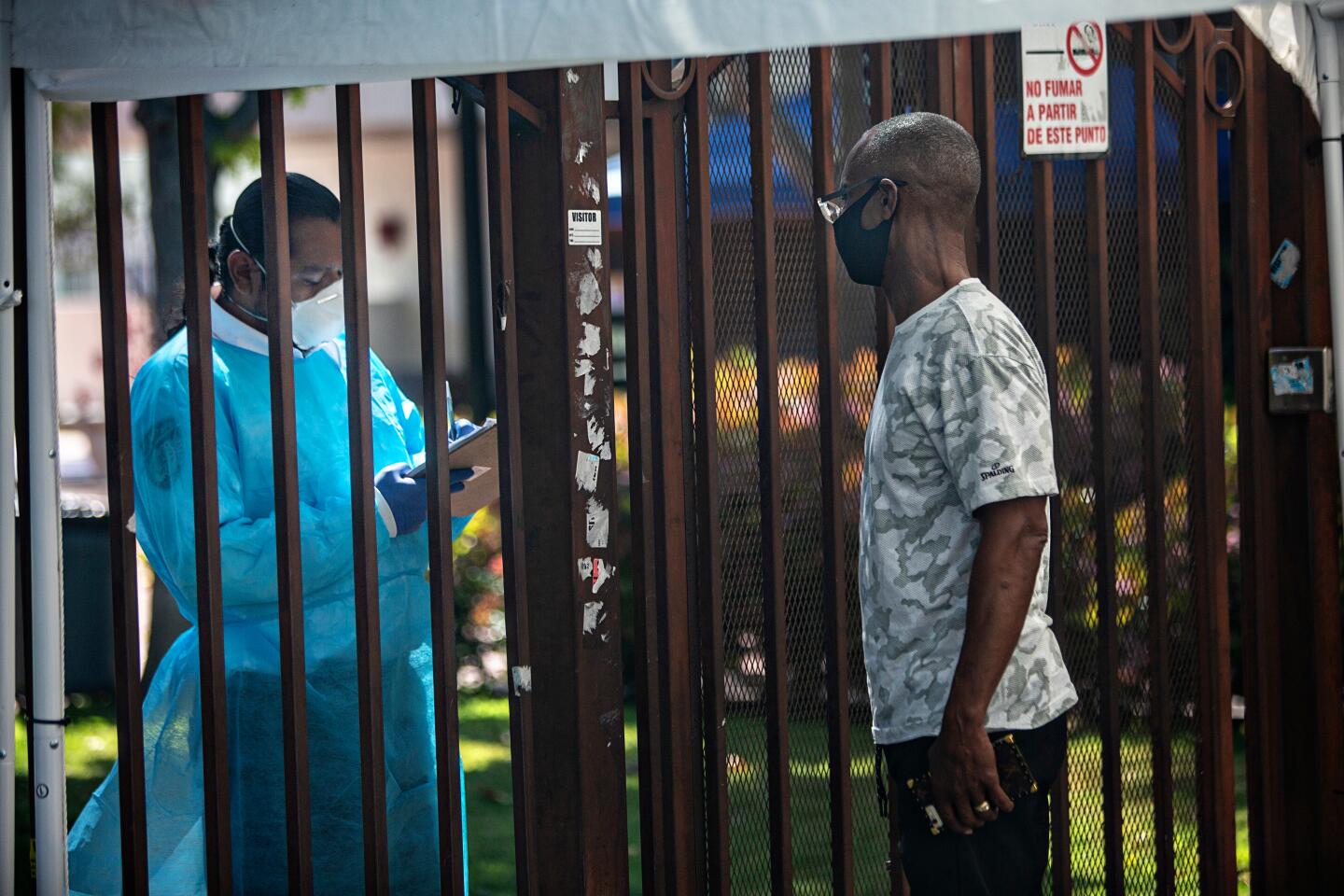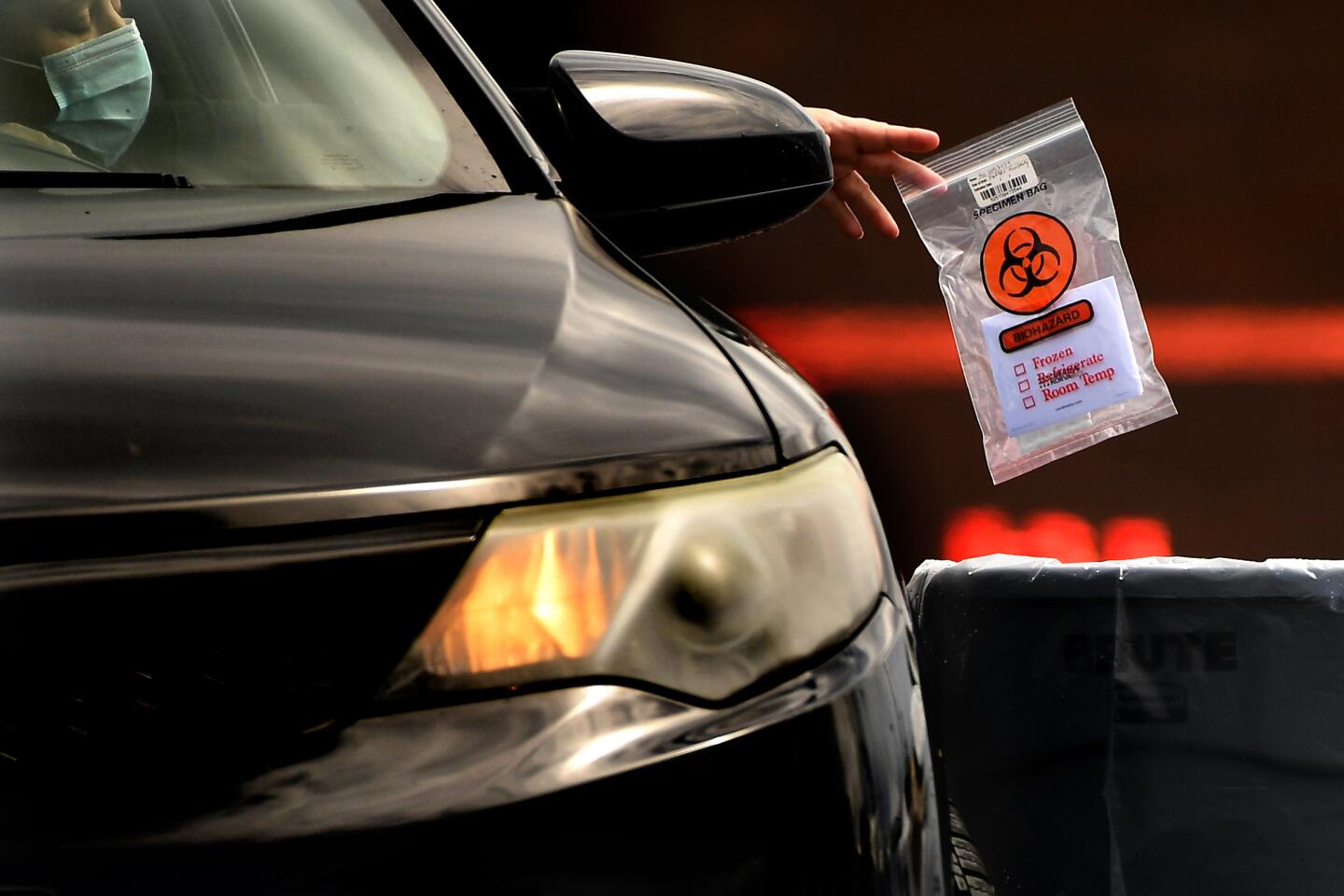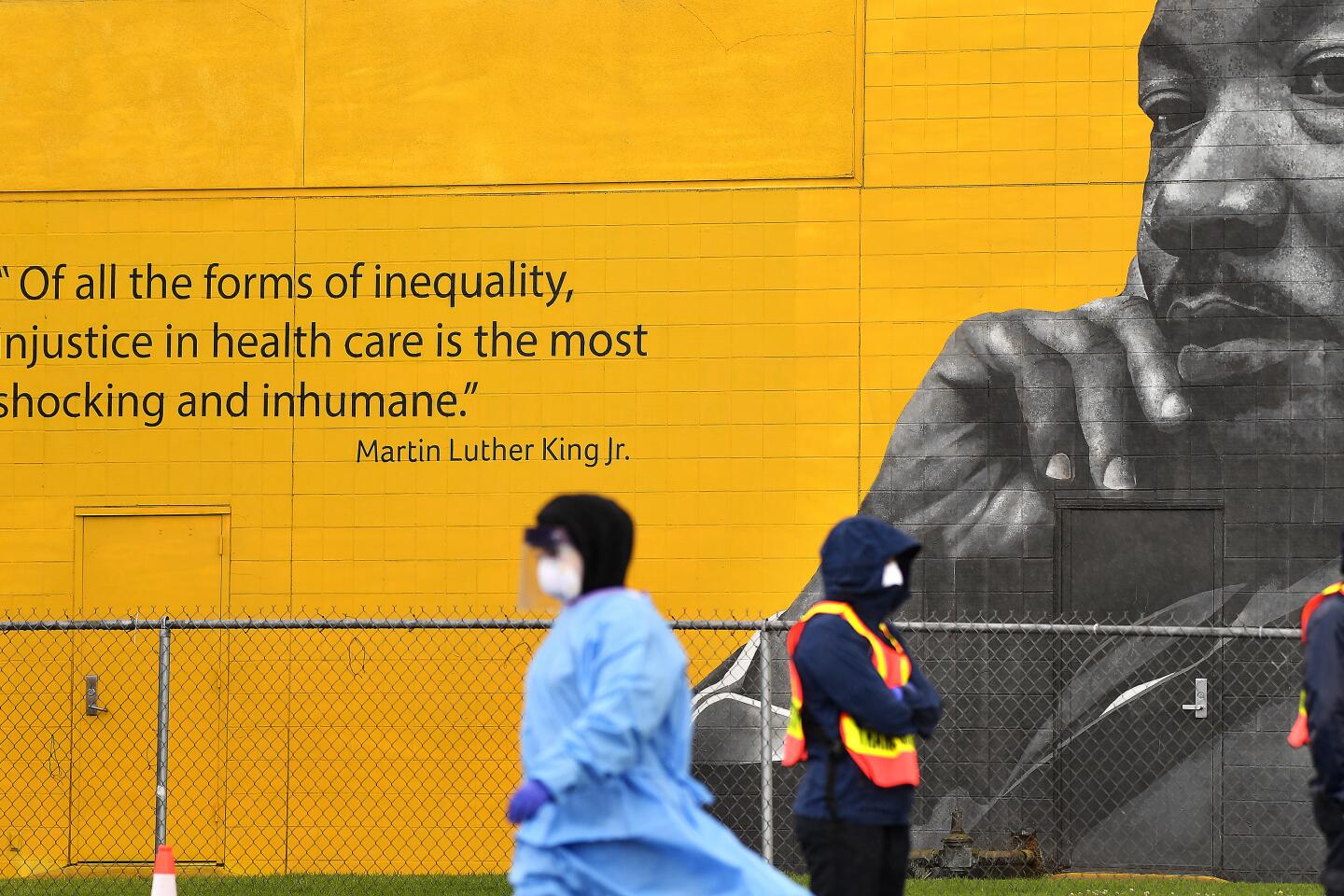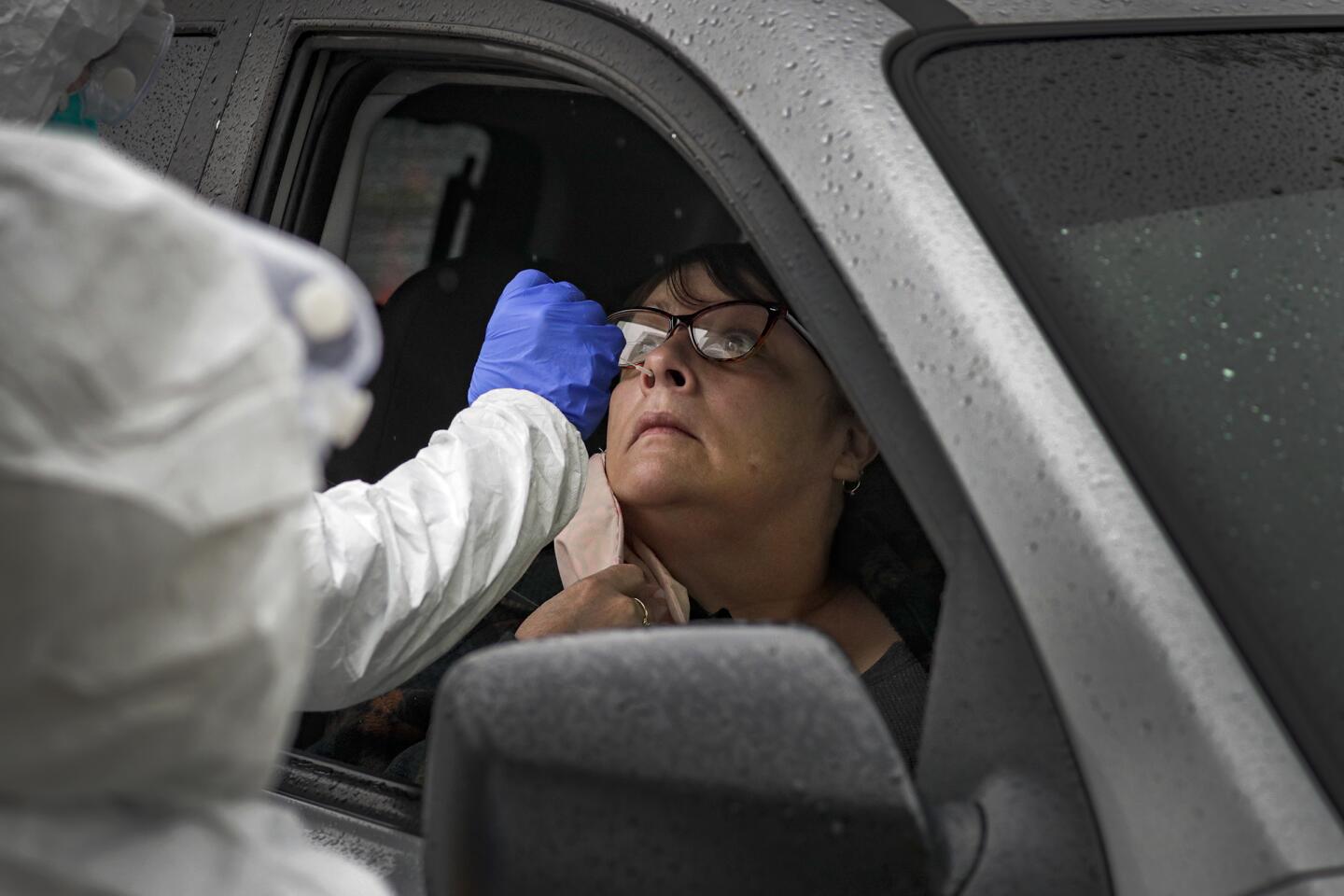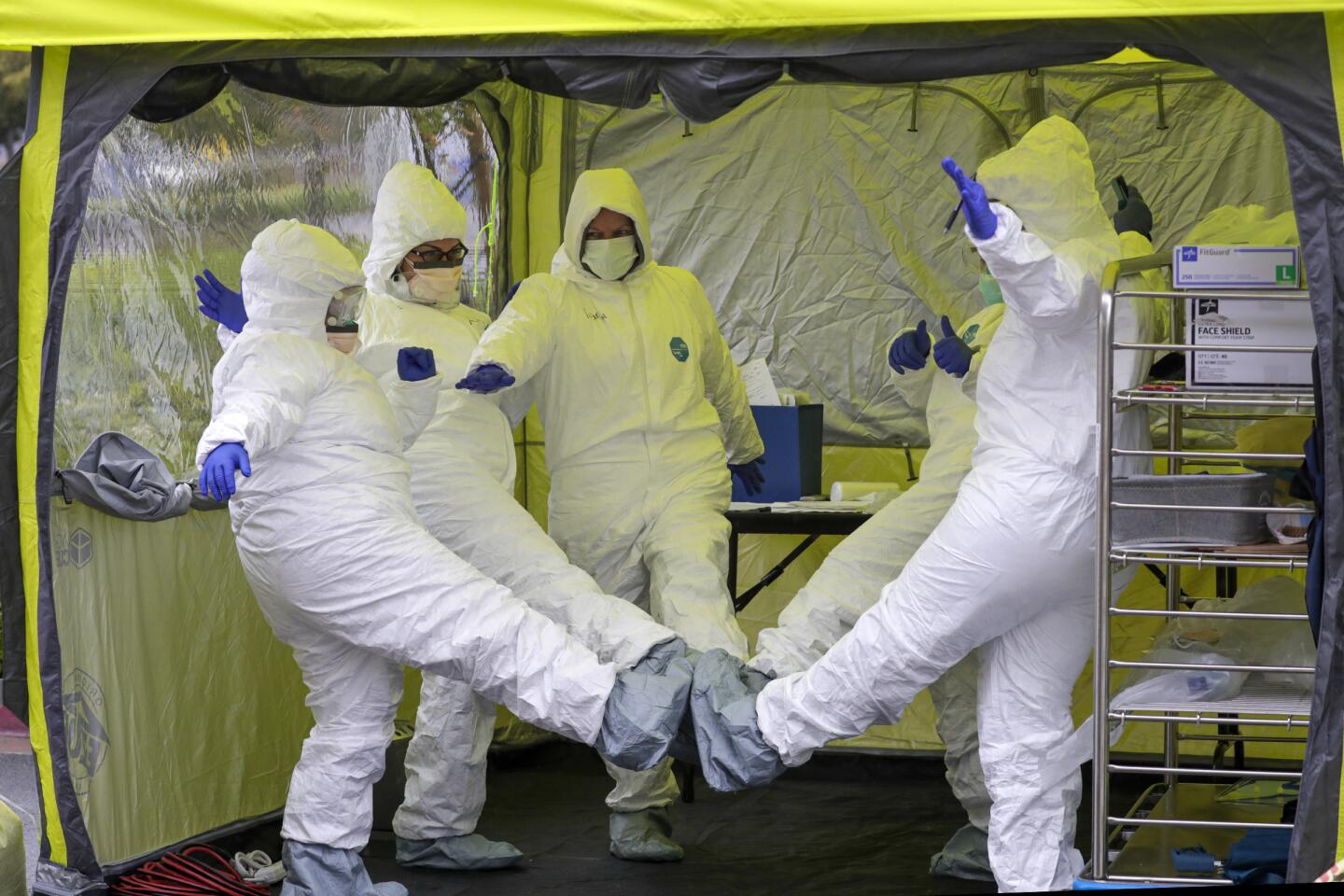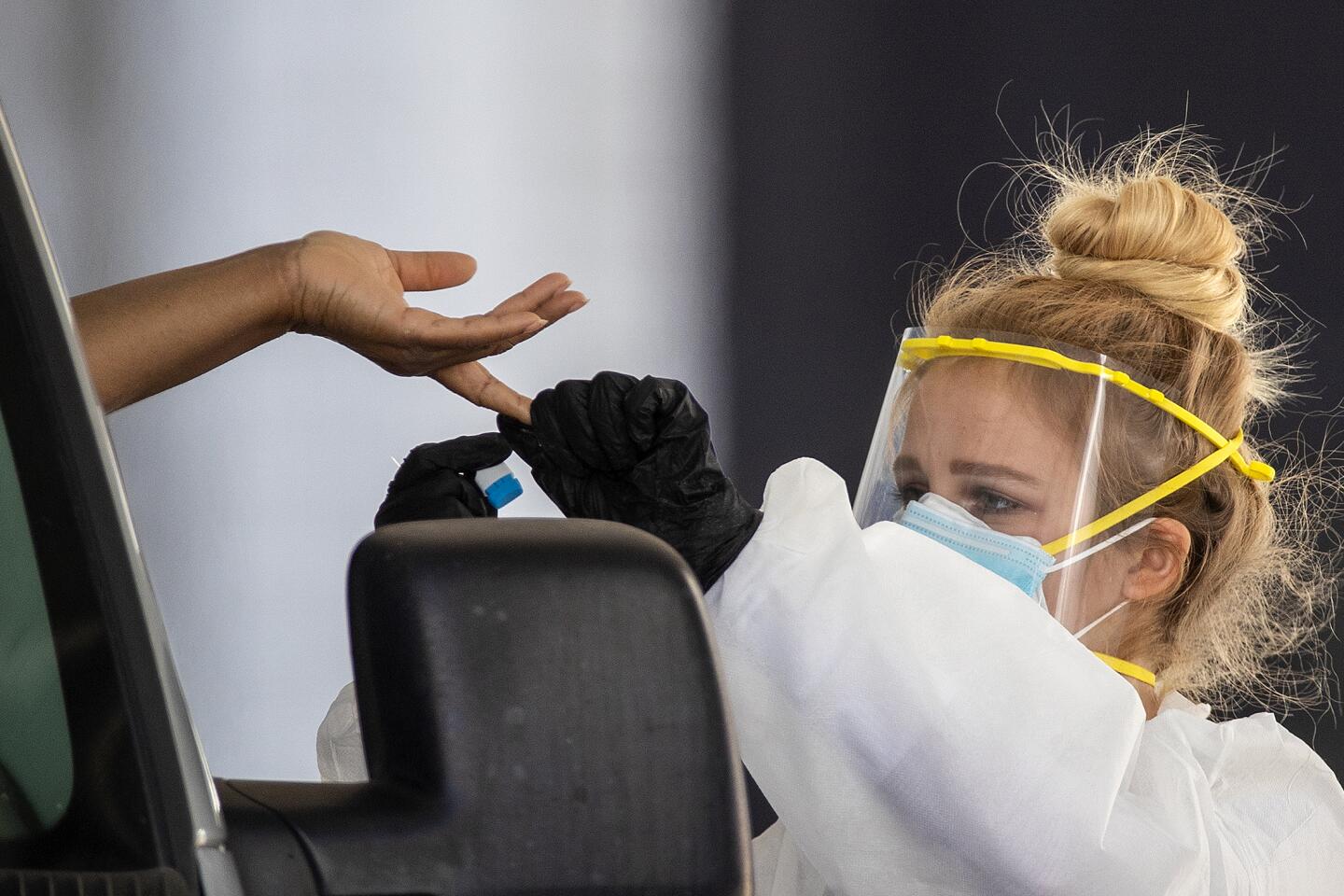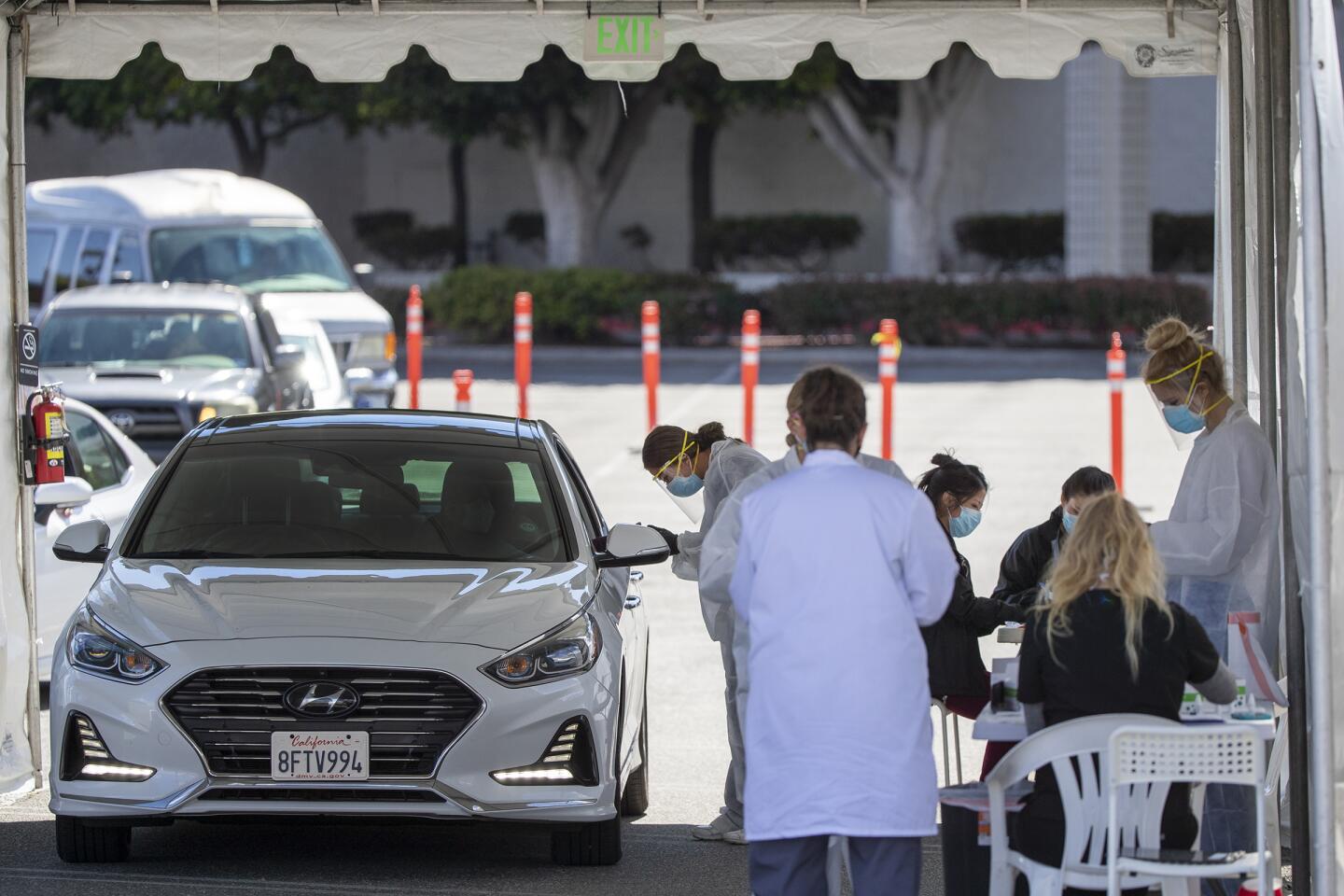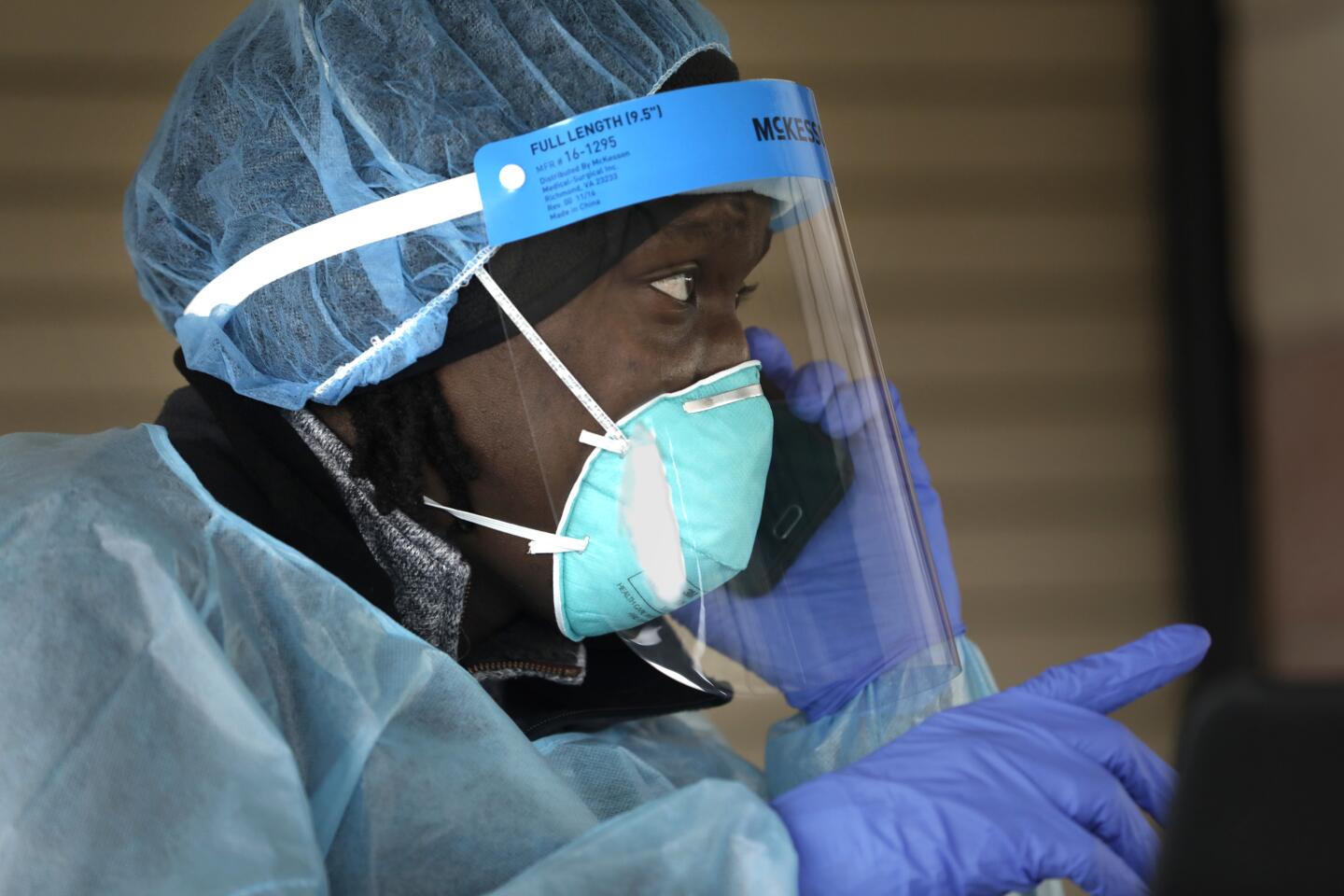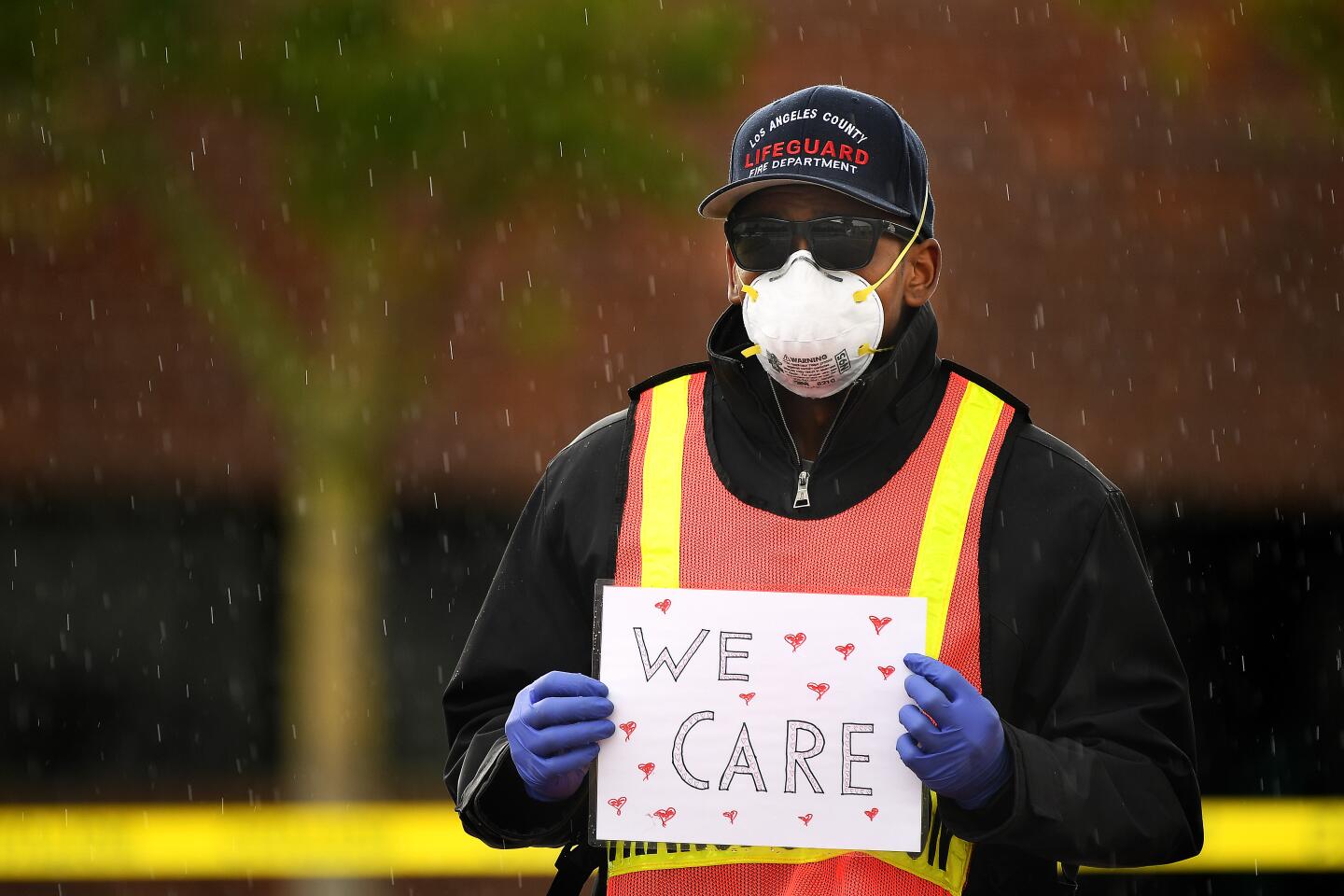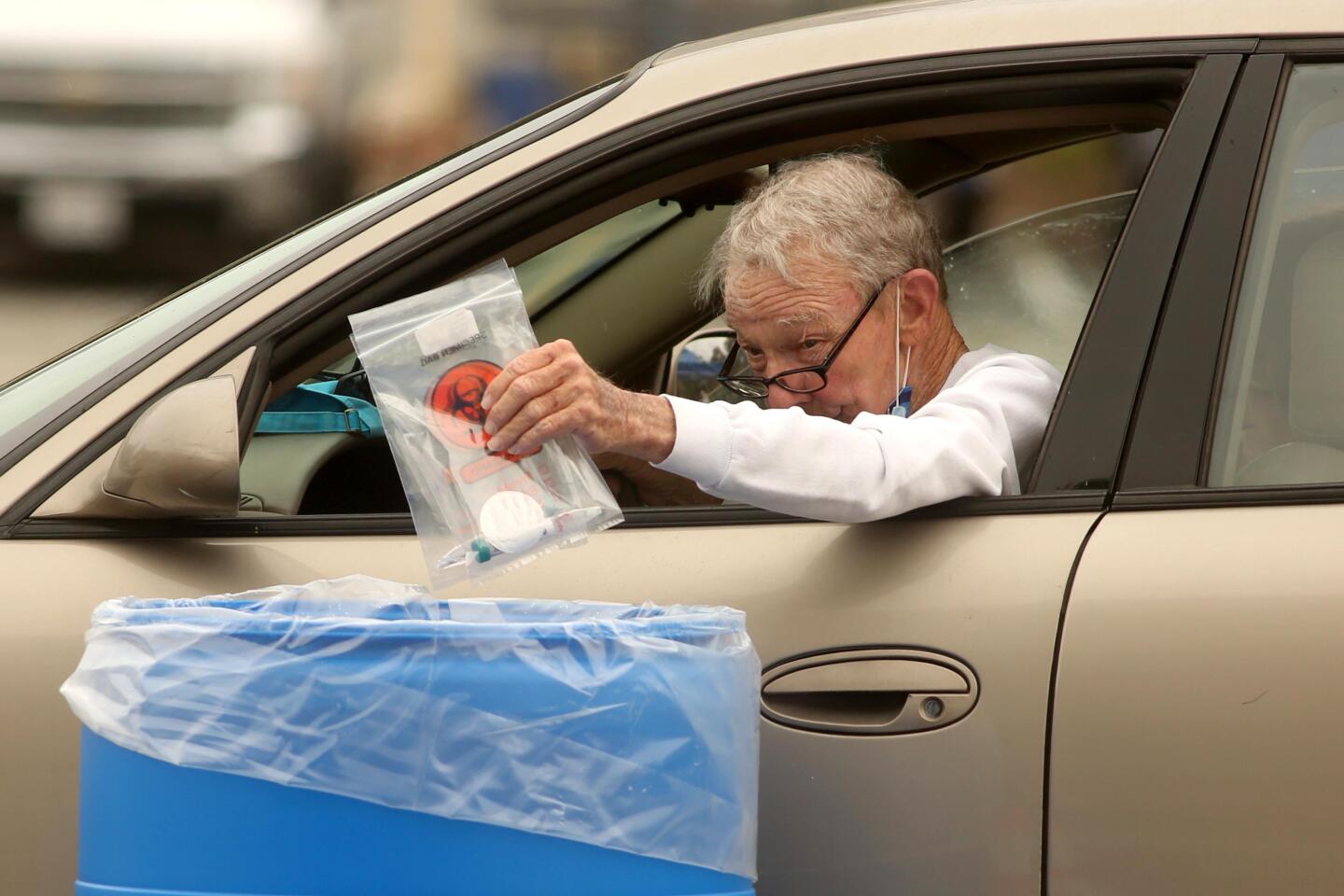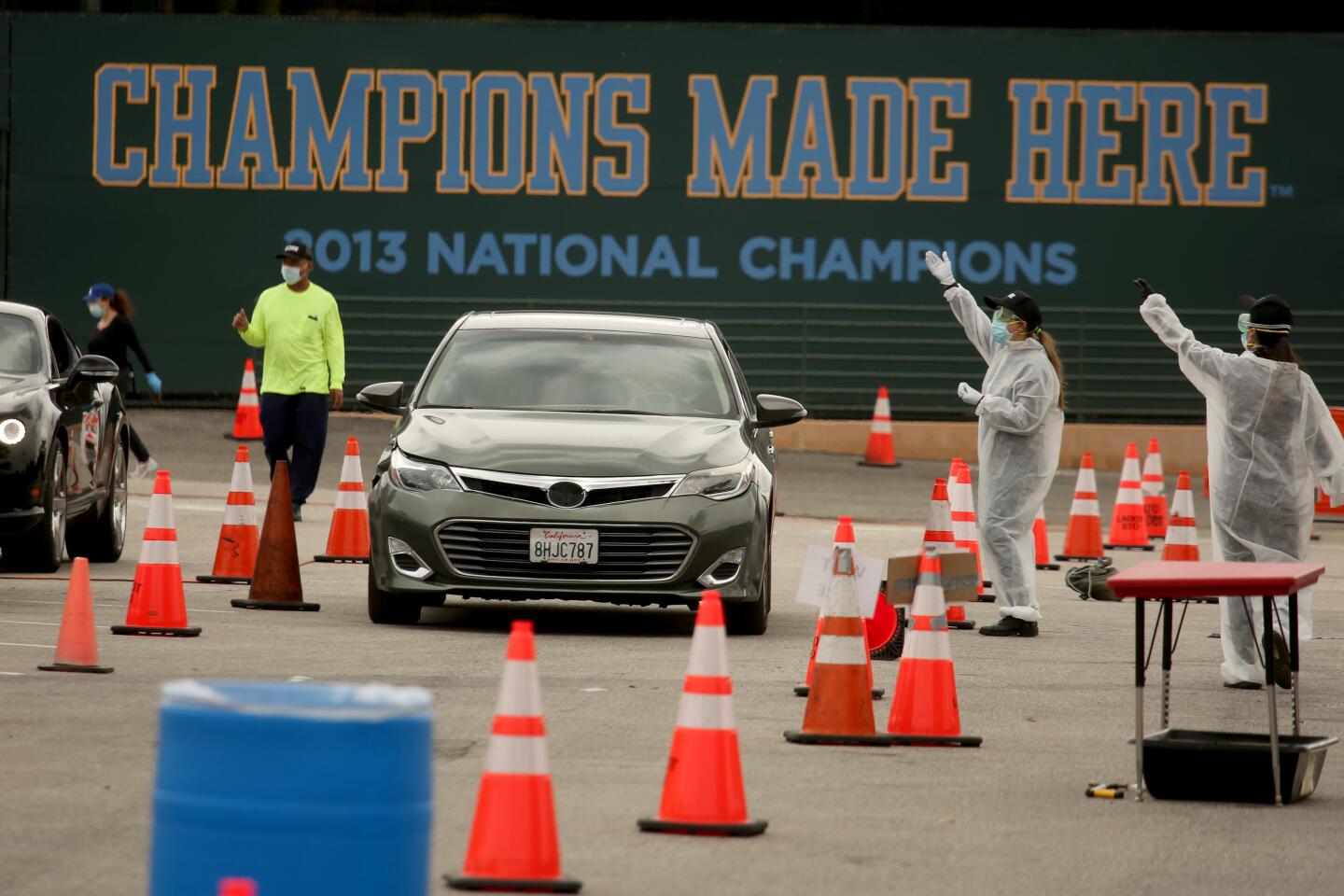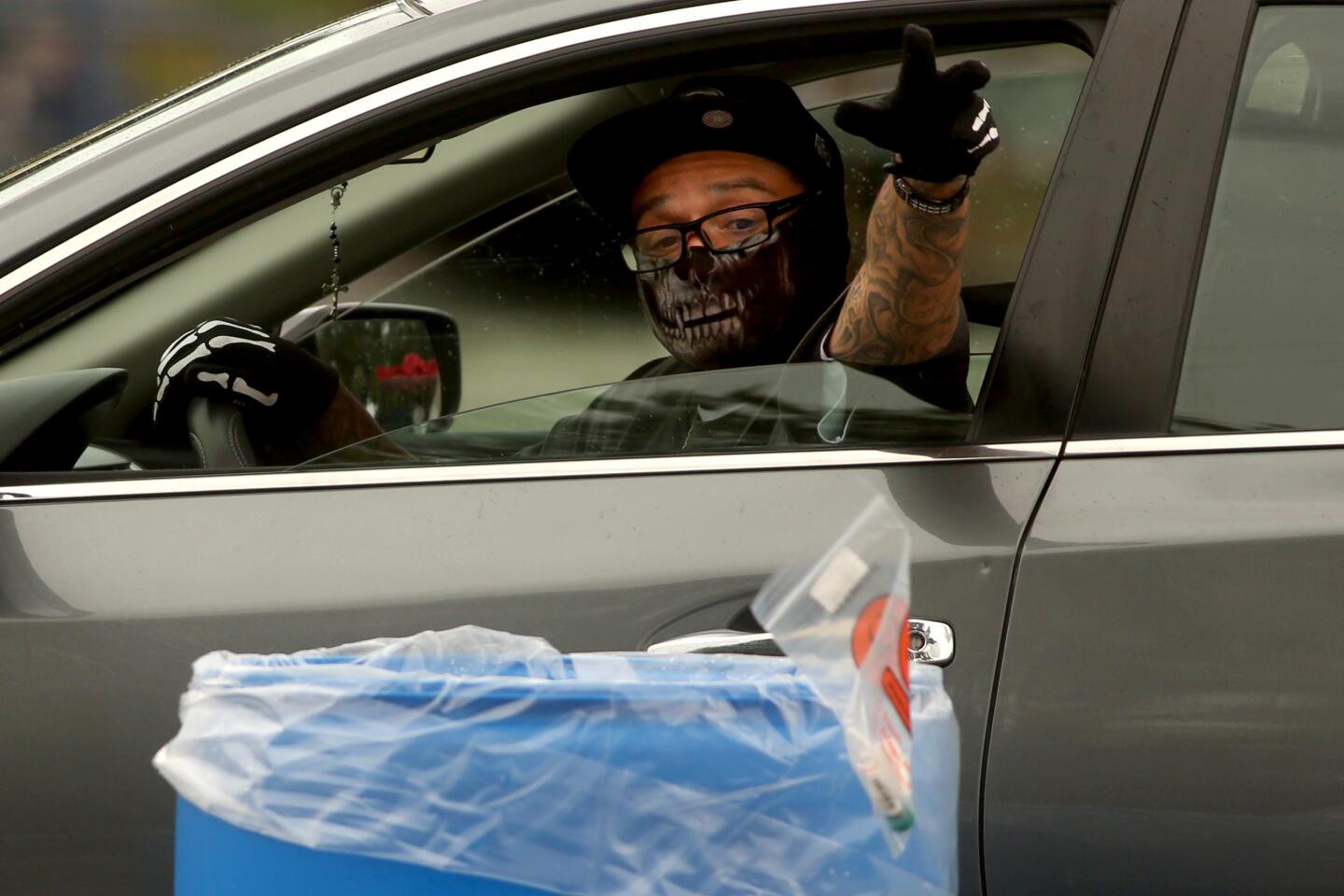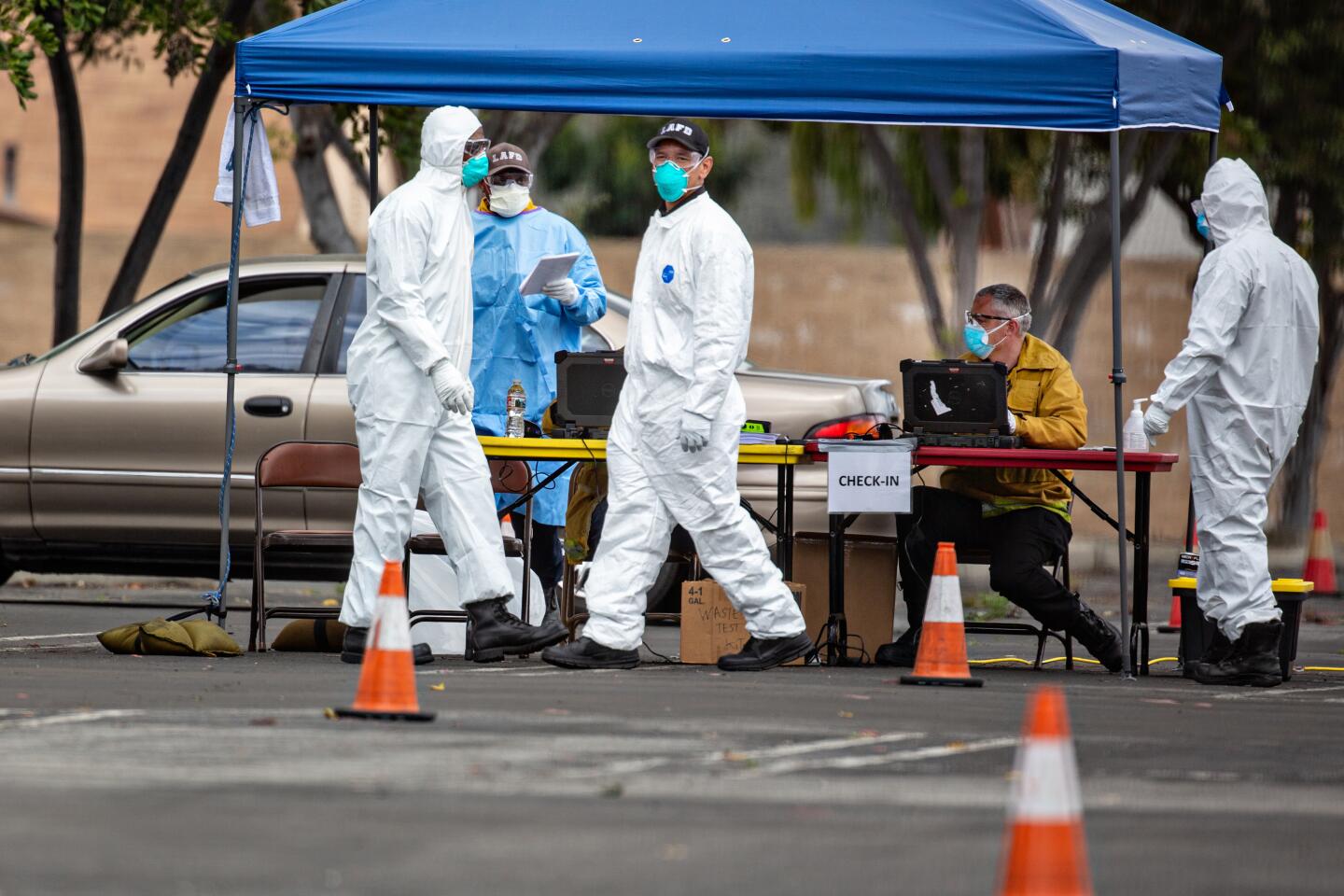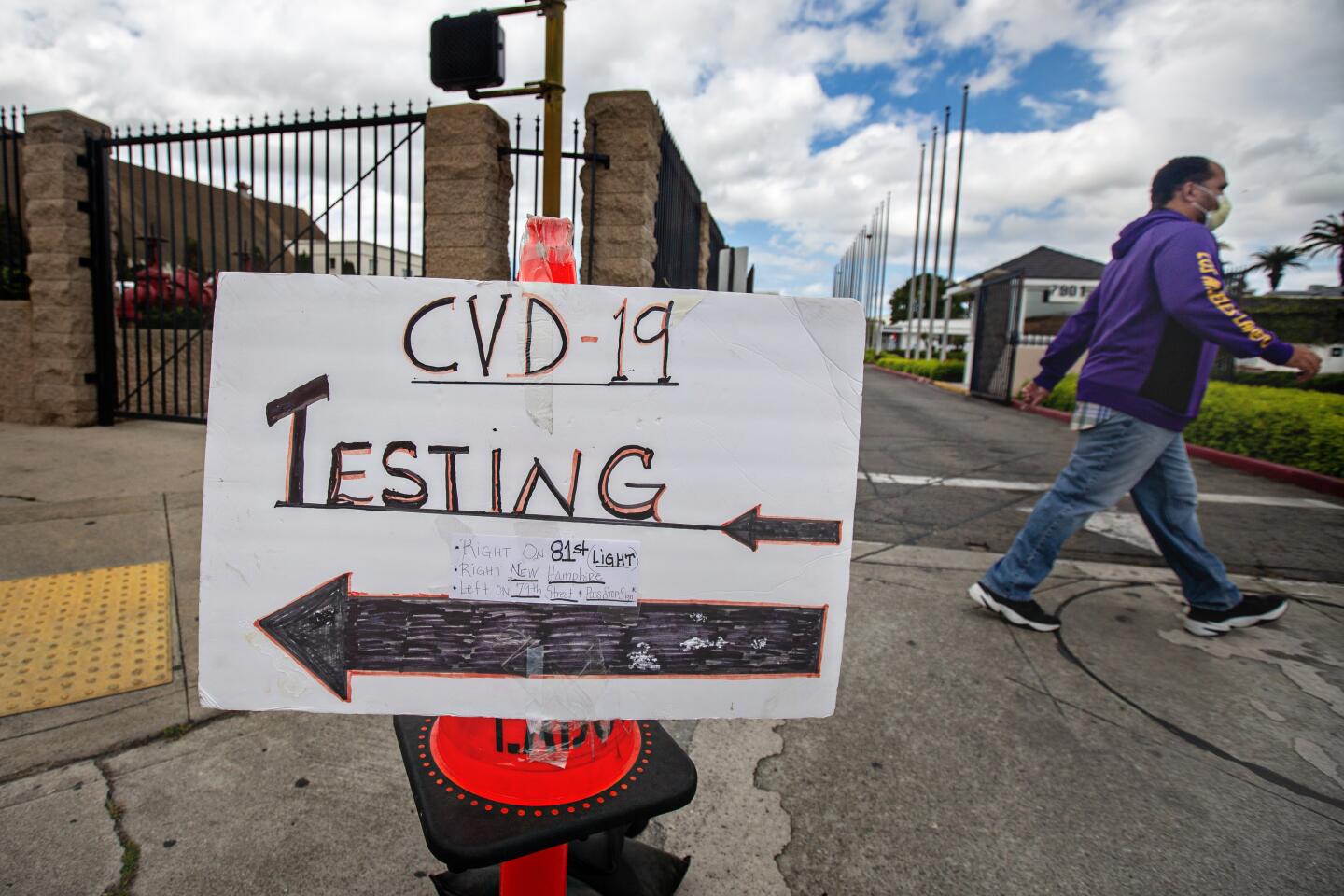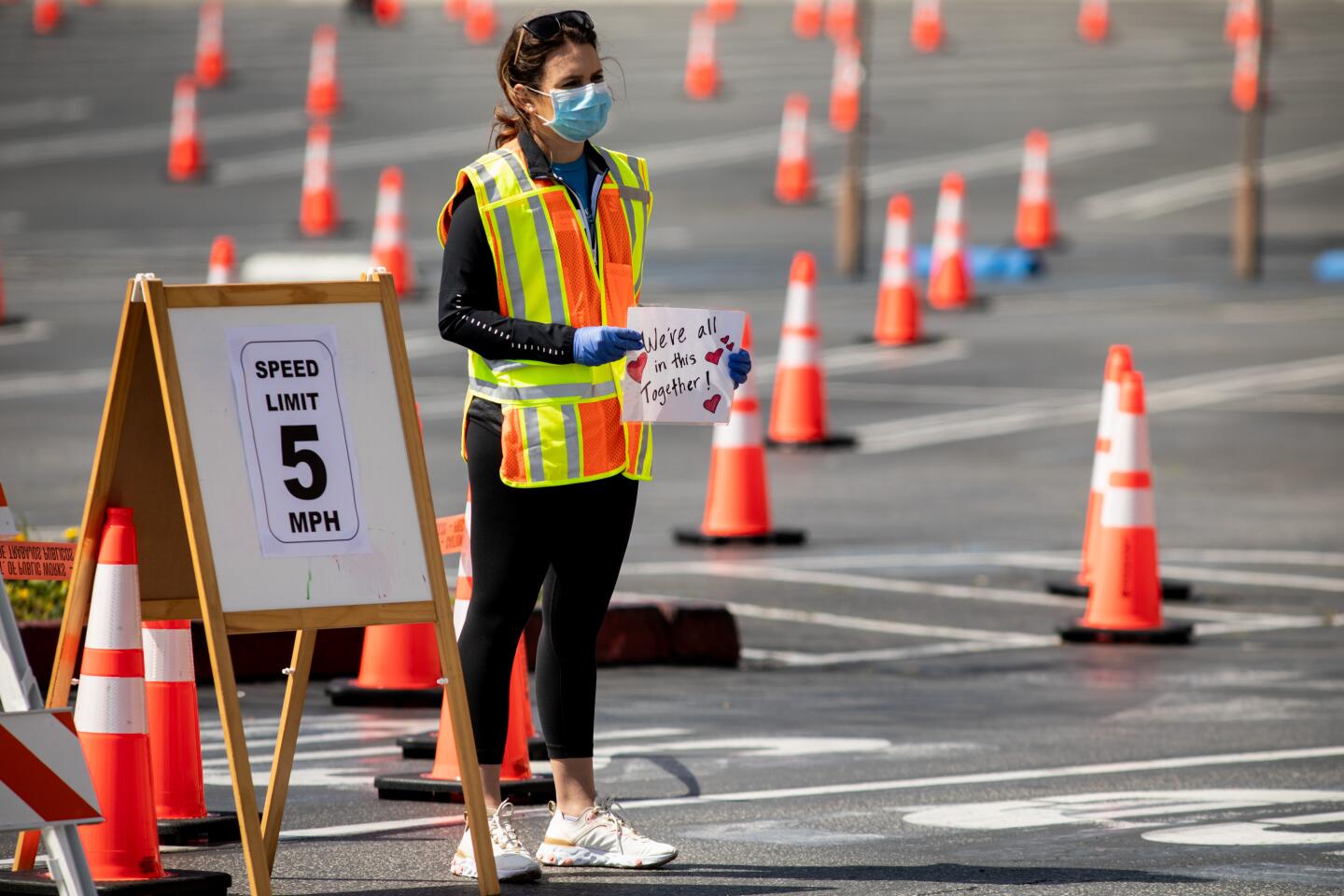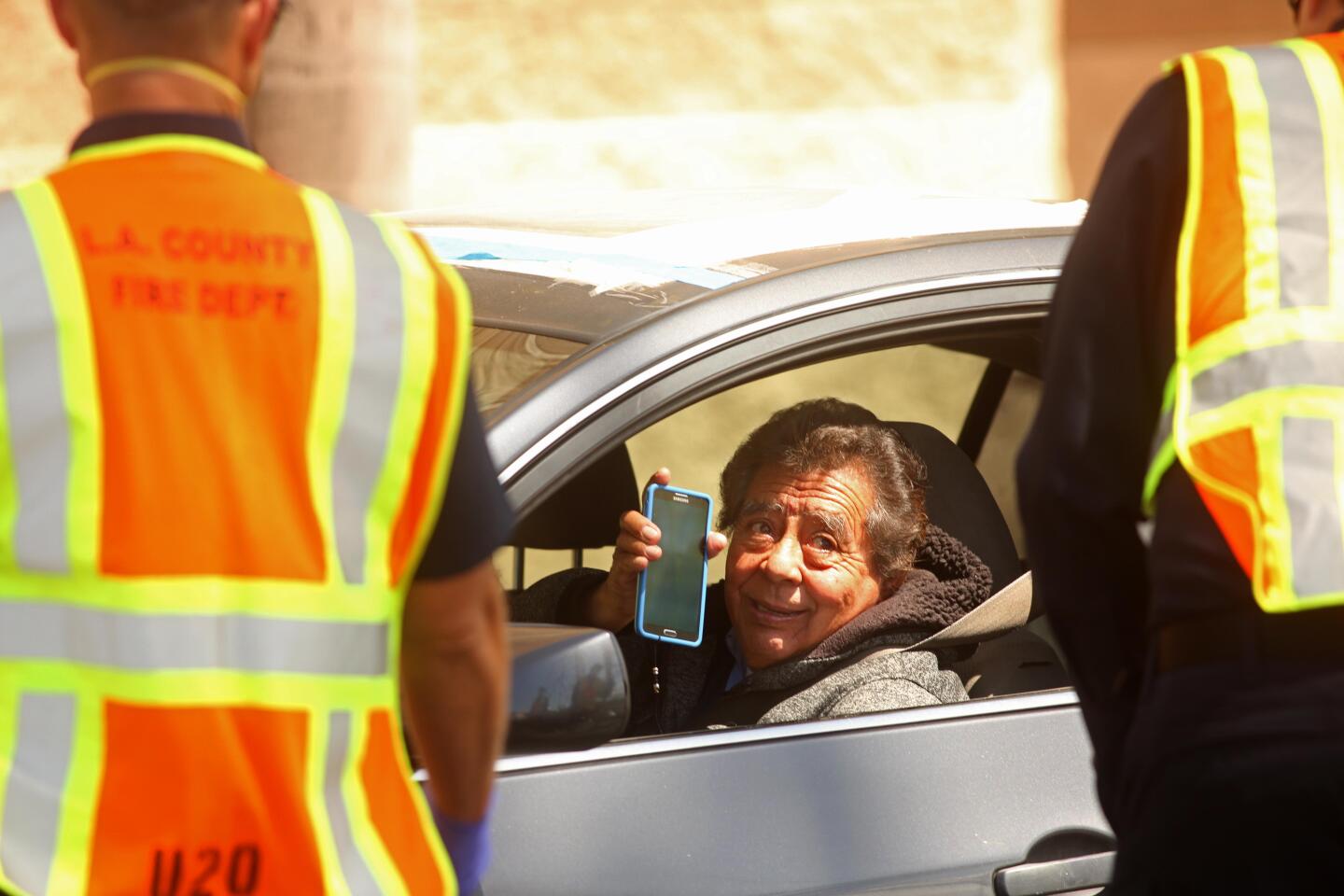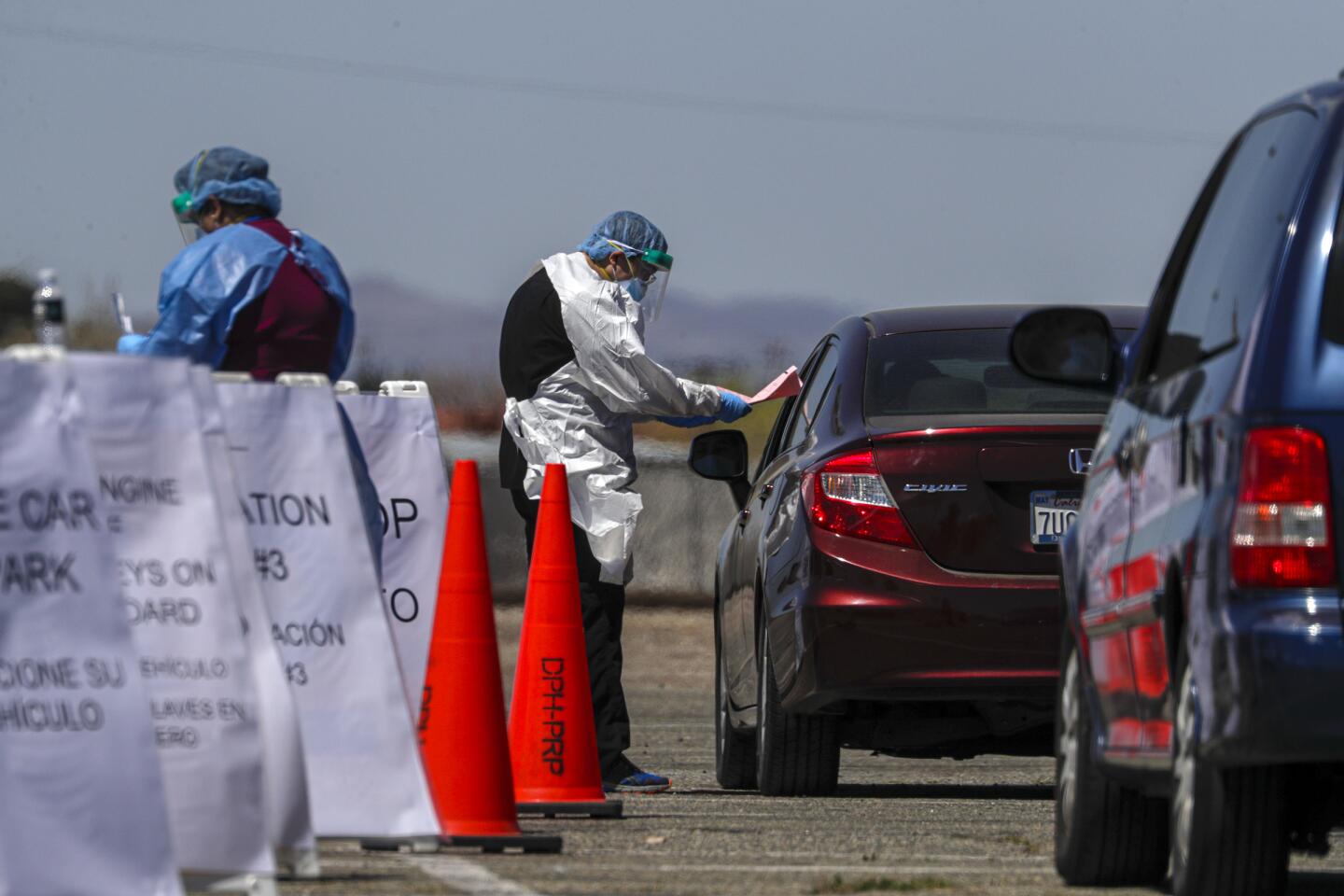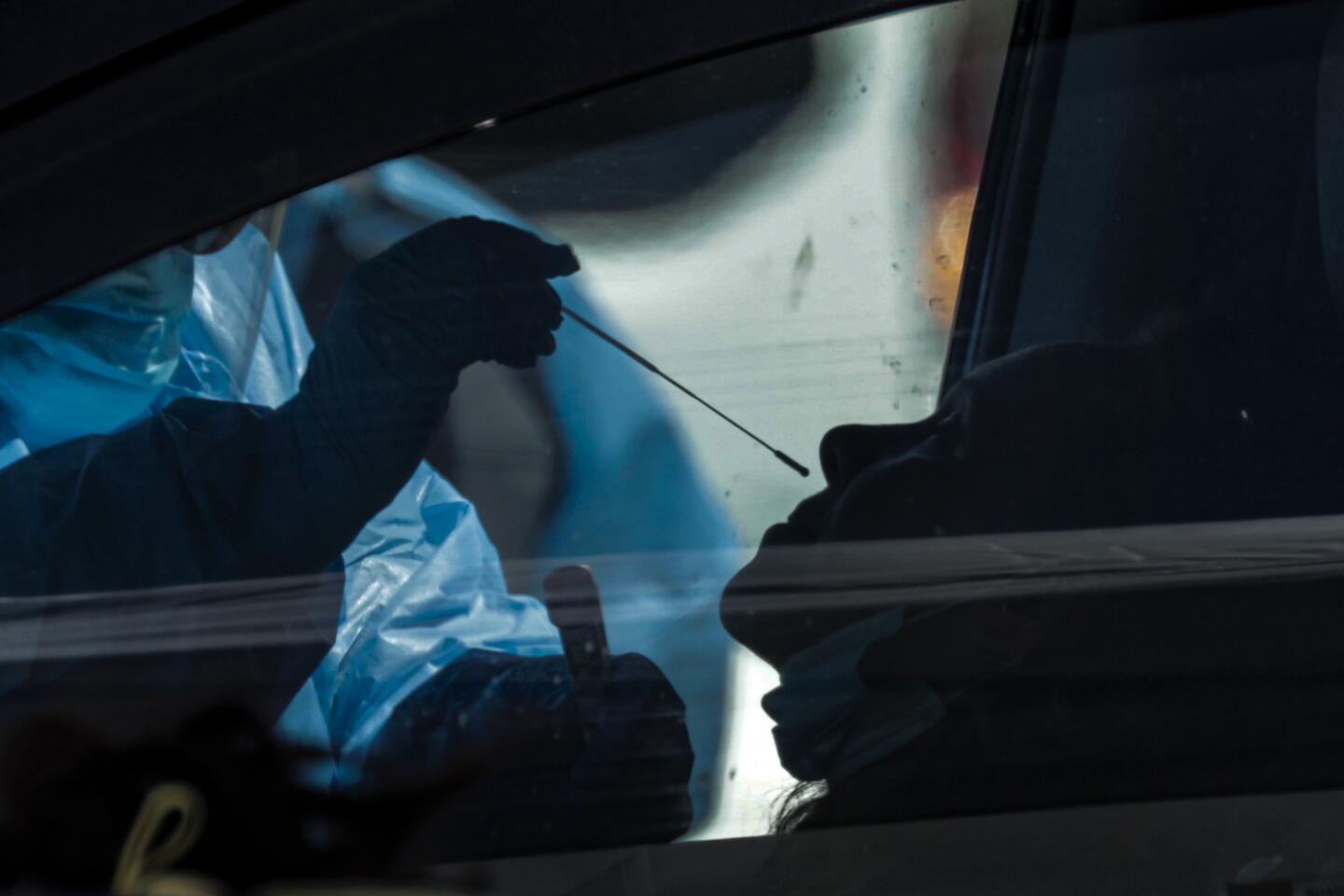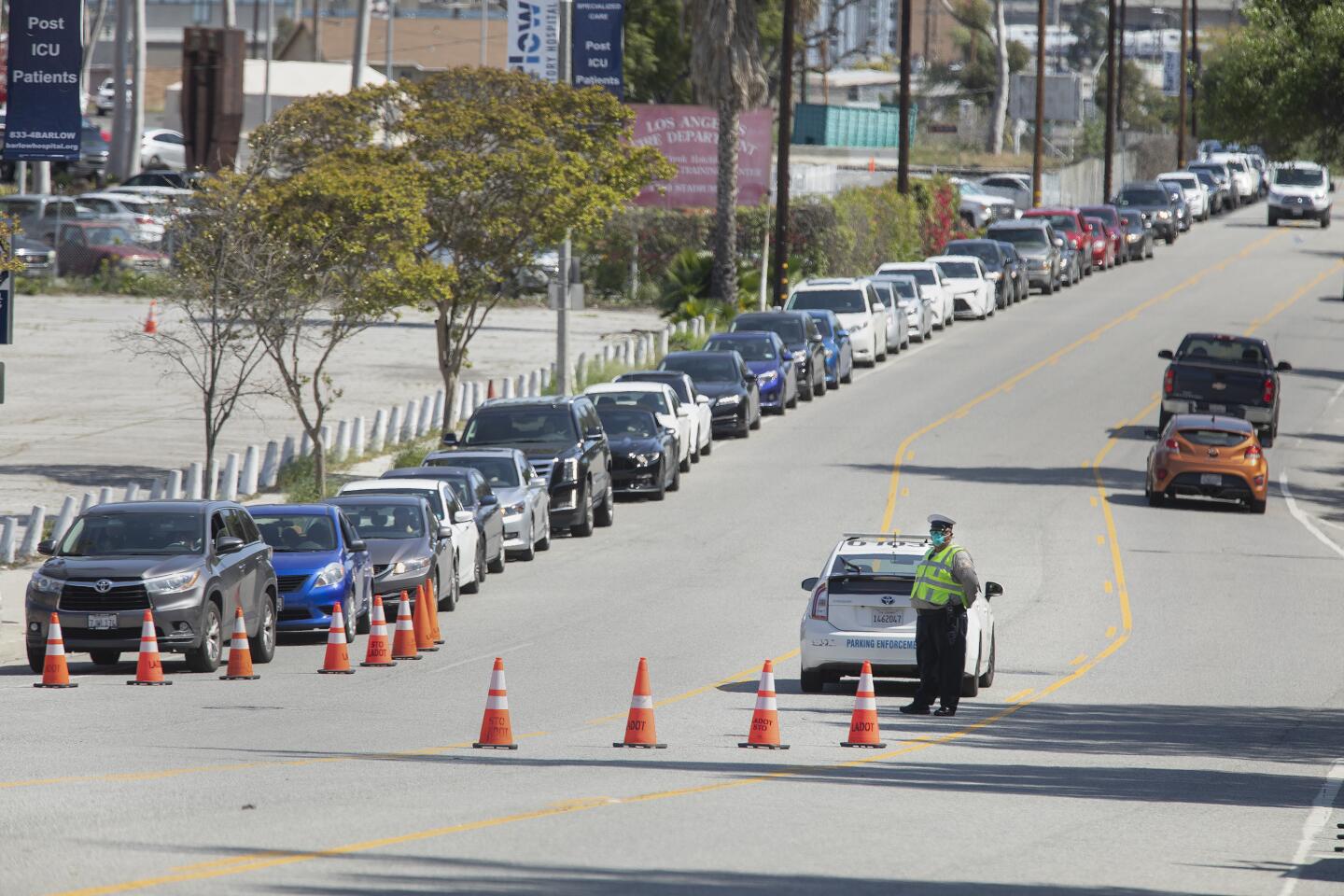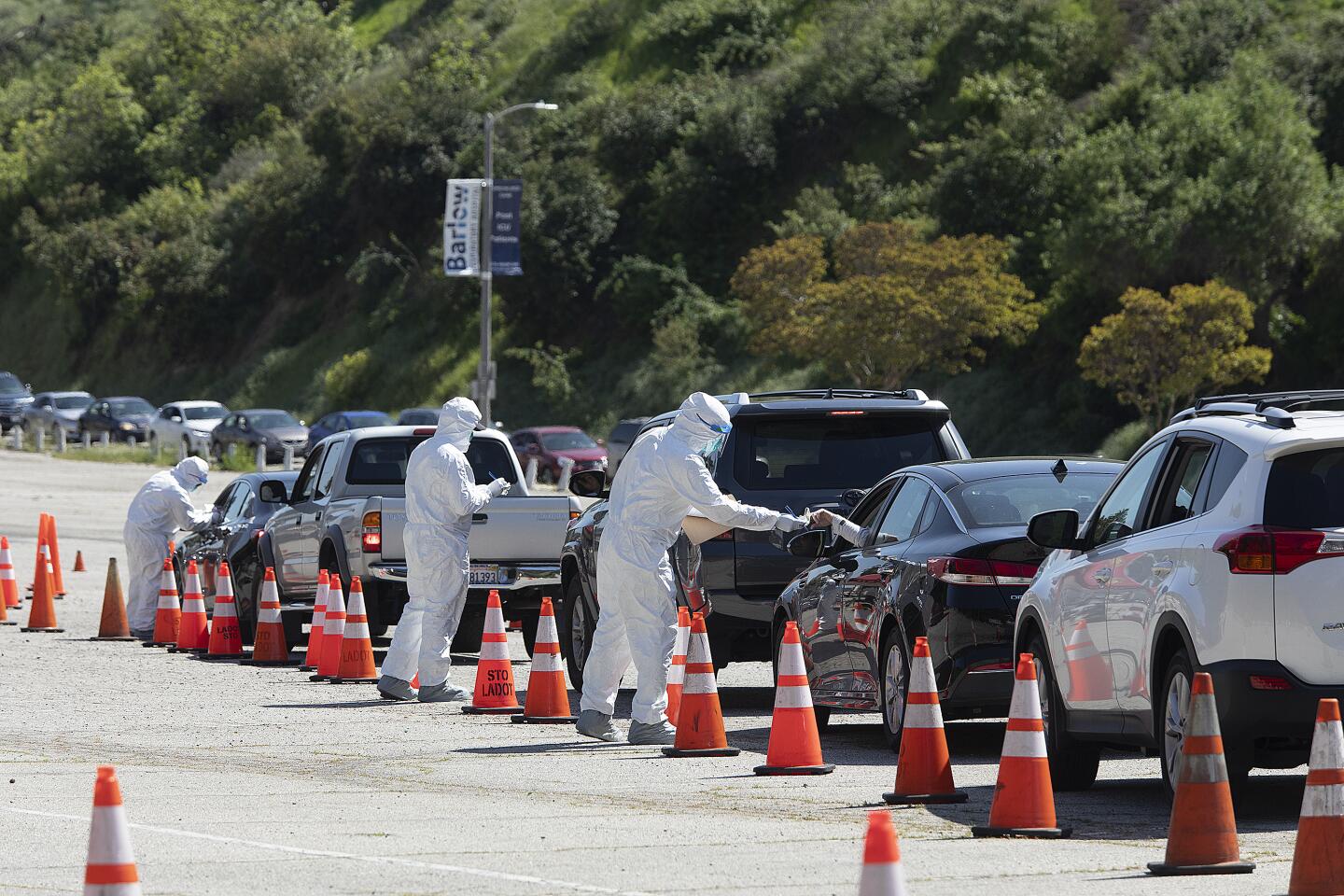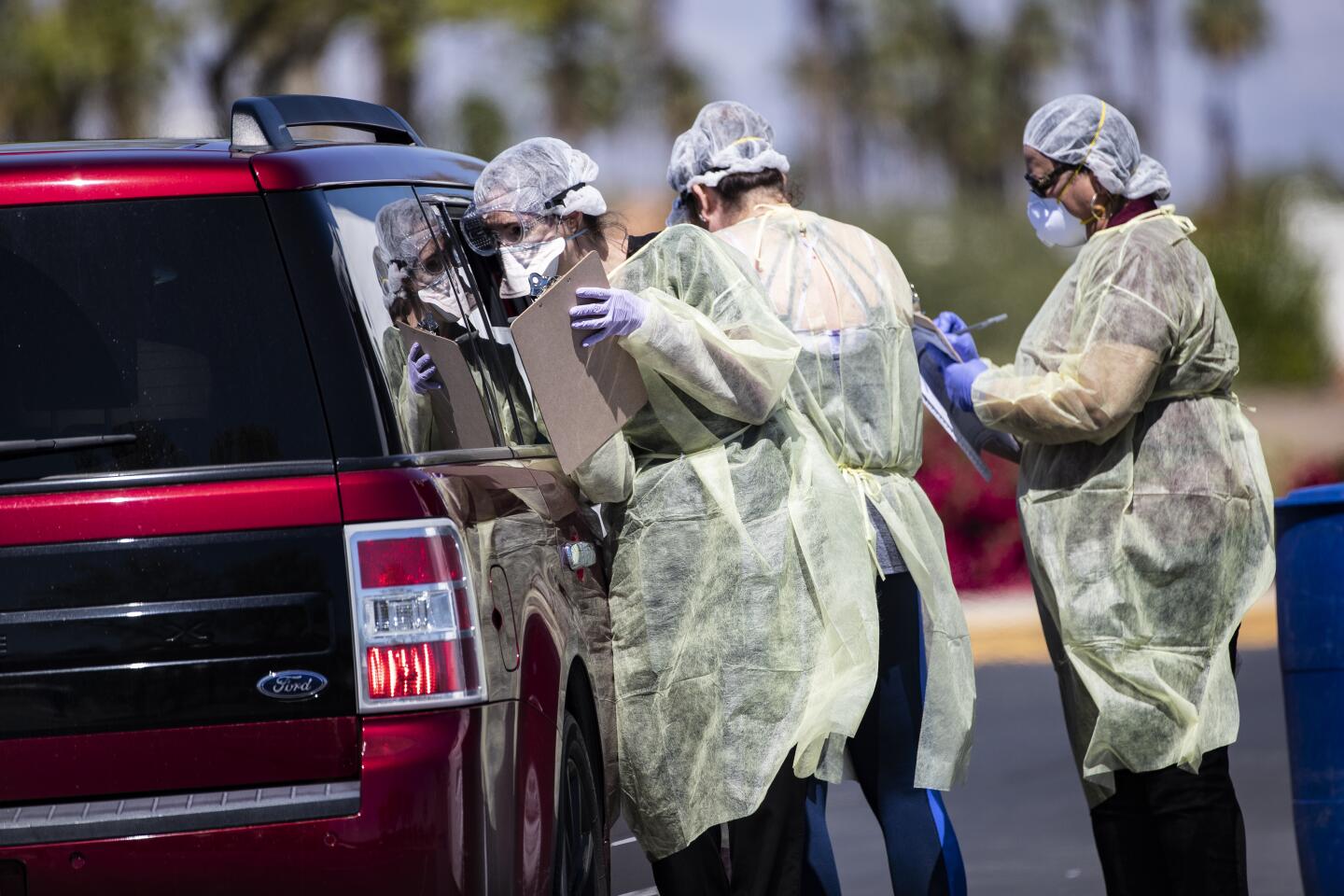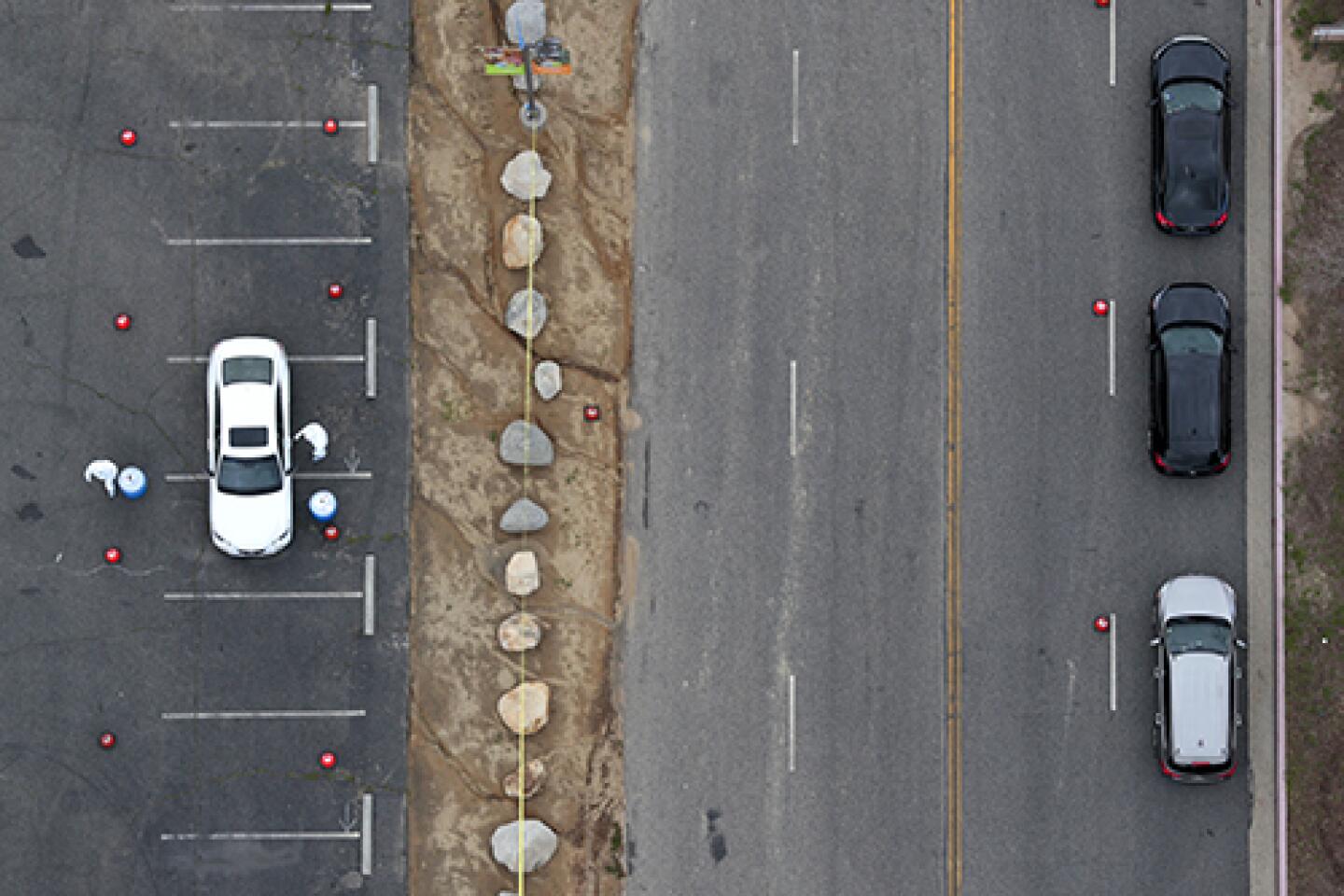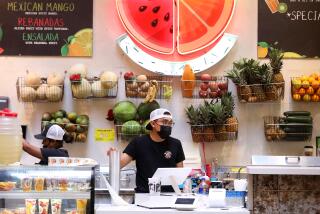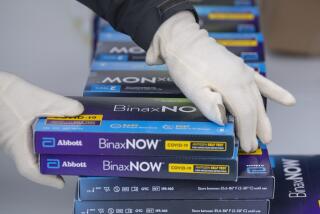California becomes first state to recommend coronavirus tests for some without symptoms
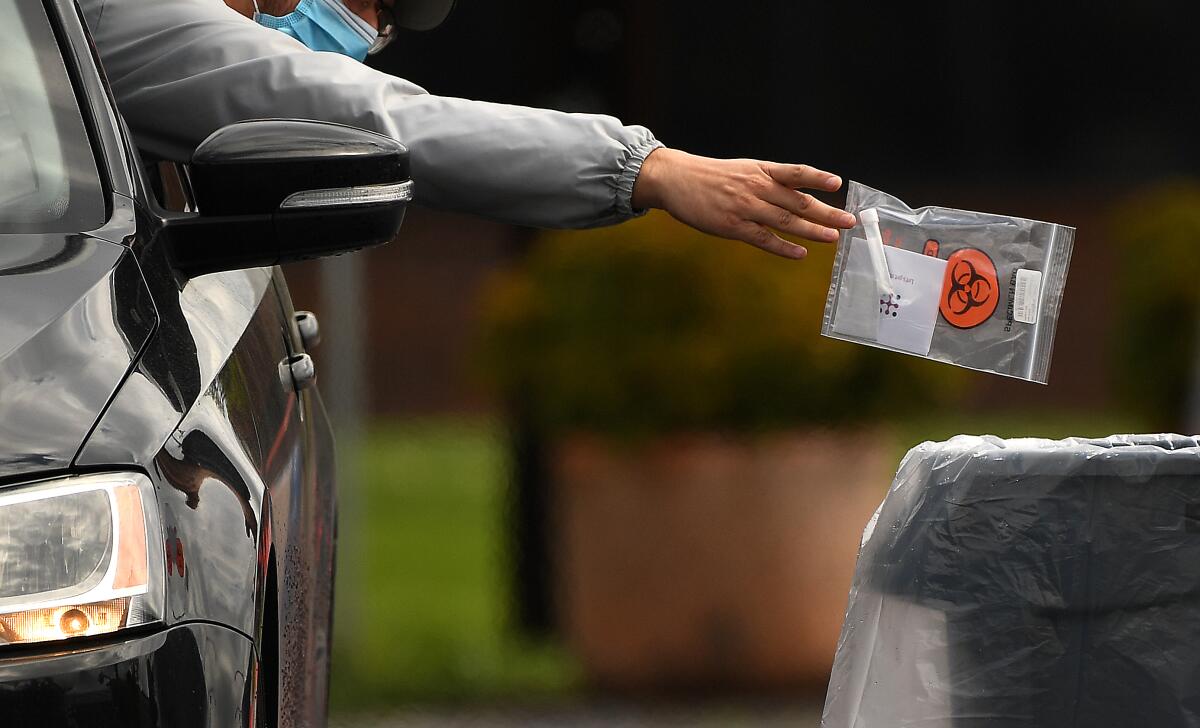
California public health officials have partially lifted restrictions on who should receive tests for the coronavirus, recommending for the first time that asymptomatic people living or working in high-risk settings such as nursing homes, prisons and even some households should now be considered a priority.
The move makes California the first state to broaden restrictive federal guidelines and reflects increasing availability of testing, as major labs report sufficient supplies and excess capacity to run more procedures, according to the public health department.
The developments are viewed by some experts as a significant step toward establishing widespread testing in California to identify and isolate every coronavirus case.
“California is leading the way,” said Brandon Brown, an epidemiologist at UC Riverside. “We will be able to test more individuals, identify more people currently with COVID-19, isolate them, and thereby both flatten the curve and prevent the future spread of infection.”
But others say it’s too early to tell if sufficient progress is being made to enhance a testing process that has been botched from the start by delays and bungling. Just last week, state officials said swab and reagent supply chains remained inadequate across the state.
Like other states, California had previously adhered to narrow testing recommendations put forth by the federal Centers for Disease Control and Prevention, which identify hospitalized patients and symptomatic healthcare workers as the primary subjects for testing. A second-priority tier includes symptomatic people who are either elderly or have underlying conditions.
People who do not show symptoms are labeled “NON-PRIORITY,” under federal guidelines. Under California’s new guidelines, asymptomatic people who work or live in high-risk settings, as identified by public health officials, are “Priority 1.”
While doctors have long been given autonomy to decide which patients should be offered tests, they faced pressure from hospital administrators — who cited CDC guidelines — to save testing tools for the sickest. The tests also rarely reached mild or asymptomatic people who did not have reason to seek medical attention, but could be spreading the virus.
“Most of the people who wanted to get tested didn’t meet the criteria for who was allowed to get tested” under the previous guidelines, said Bob Kocher, an adjunct professor at Stanford University School of Medicine who serves on Gov. Gavin Newsom’s task force on testing.
The new recommendations will grant health workers the liberty to use testing resources in any “congregate living situation” where the virus could spread quickly. That means nursing homes, prisons, and even certain households where they believe residents are at risk.
The public health department also added a fourth-priority tier to its recommendations, explicitly noting that local officials may test “all low-risk symptomatic persons” and even conduct “surveillance testing of asymptomatic persons” when possible.
“Our job is to make sure that all Californians can get a test done, and that it’s convenient, and accurate — and that our state leads the country in the amount of testing done,” Kocher said. “I think we’ll achieve that goal.”
The latest maps and charts on the spread of COVID-19 in California.
Outside experts say the changes signal an overall shift in response strategy, tracking and testing each confirmed case’s close contacts in order to halt transmission.
Dr. Georges Benjamin, executive director of the American Public Health Assn., called it “wonderful news,” saying the broader criteria would allow experts to trace contacts more extensively. “Enhanced tracking will result in much better disease containment.”
According to the department’s memo to healthcare workers, one major reason for the changes is increased access to supplies. Testing “is becoming more readily available at hospital, academic, commercial, and public health laboratories across California,” it said.
High-volume labs across California have the collective capacity to run more than 80,000 tests per day, Kocher said. Technicians at Kaiser, Sutter Health, Quest, LabCorp, and the University of California have ample supplies and “would be happy to have more samples,” Kocher said. “They could run a lot more tests a day, but they don’t have that many samples.”
That comes as a surprise to some, given ongoing difficulties in global supply chains. Los Angeles County on Monday reported the results of an enormous testing backlog; earlier this month, California’s testing lagged behind most other states due in part to supply issues.
“People continue to talk about testing, testing, testing. I think people don’t understand that there’s some real fallacies to that,” said Michael Osterholm, director of the Center for Infectious Disease Research and Policy at the University of Minnesota, who said officials across the country appear to be out-of-touch with the reality of supply shortages.
“This is not about money. It’s about physics. It’s just, you can’t make up this kind of capacity overnight,” he added. “For people who think they’re going to base an amazing program on this — this is just naive.”
As recently as last Wednesday, Newsom pointed to ongoing product shortages that have hampered California’s testing efforts. “We need more swabs. We’ve been very directed and pointed in terms of working with our partners at FEMA, to try to procure those swabs,” he said.
The task force also acknowledged the procurement issues. “There are definitely some small hospital labs you can find that will say, ‘I’m out of stuff, and I can’t get it,’ and they’re dealing with the shortage in the extraction chemicals,” said Kocher. “But we’ve come up with good plans to resolve bottlenecks. We have a nice supply,” he added.
The state hopes to be running 25,000 tests per day by the end of April, Kocher said, and will continue to increase capacity over the summer. “If it turns out that we need a lot more testing, then we’ll work to get even more,” Kocher said.
Times staff writer John Myers contributed to this report.

